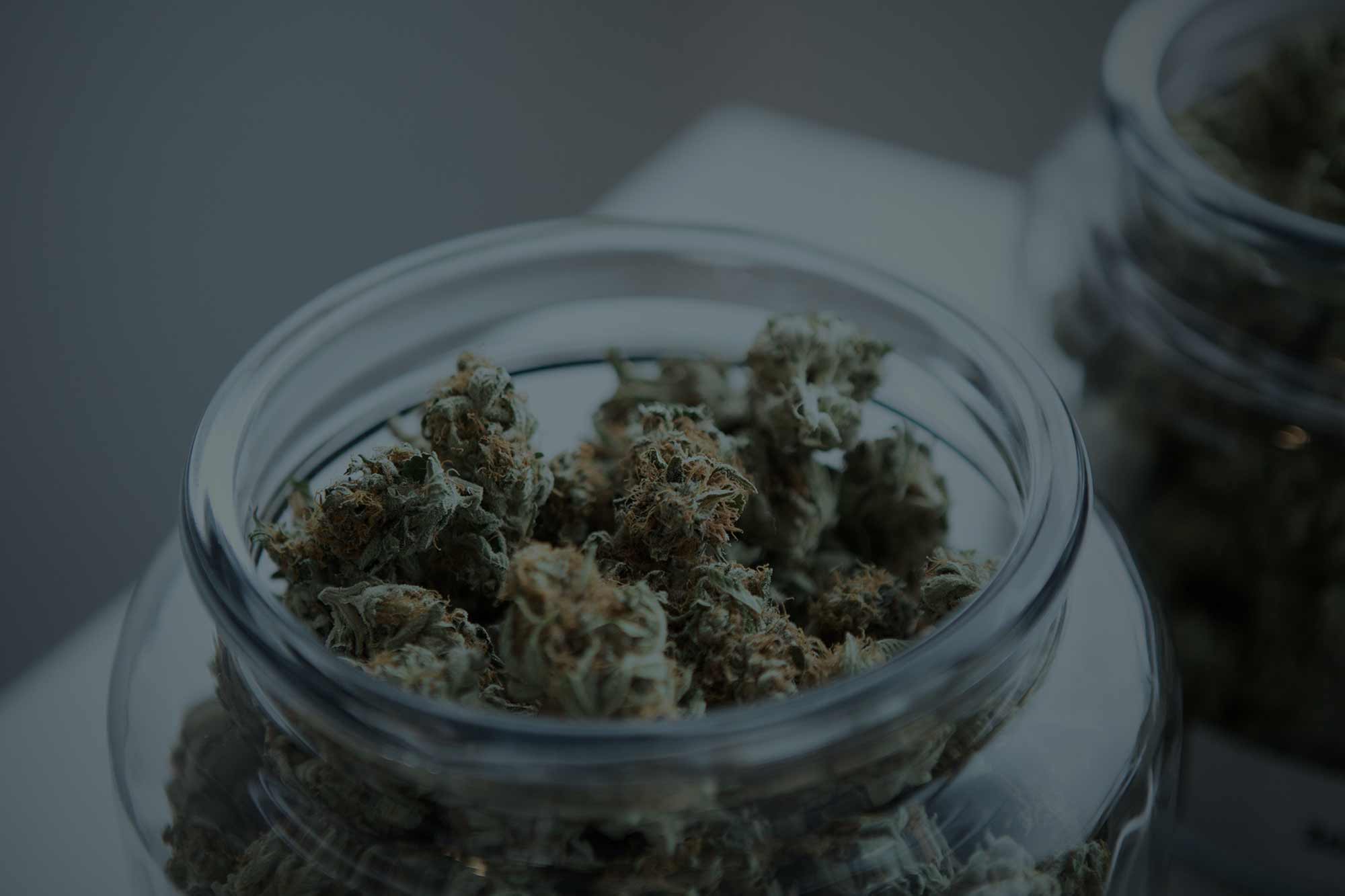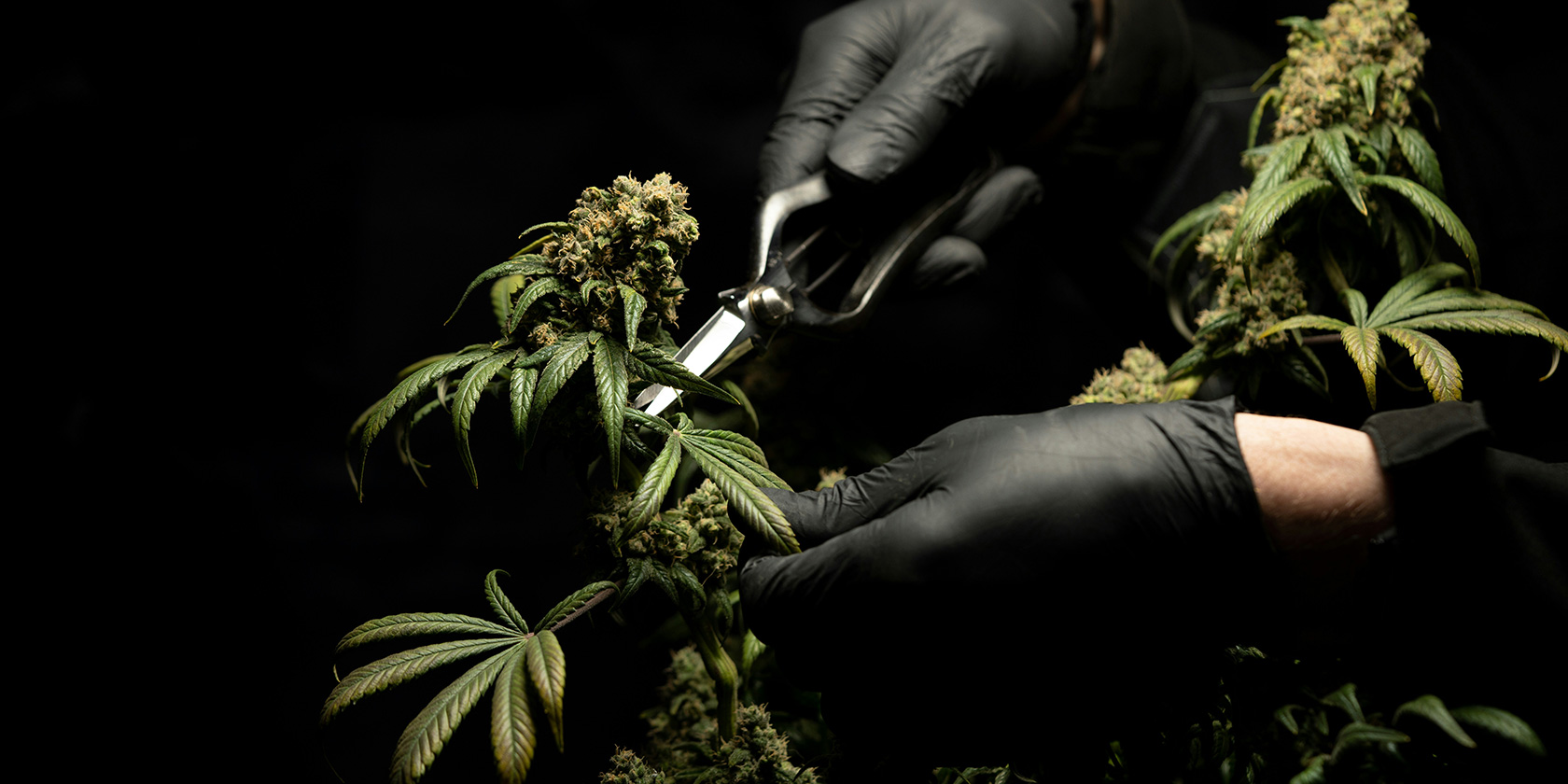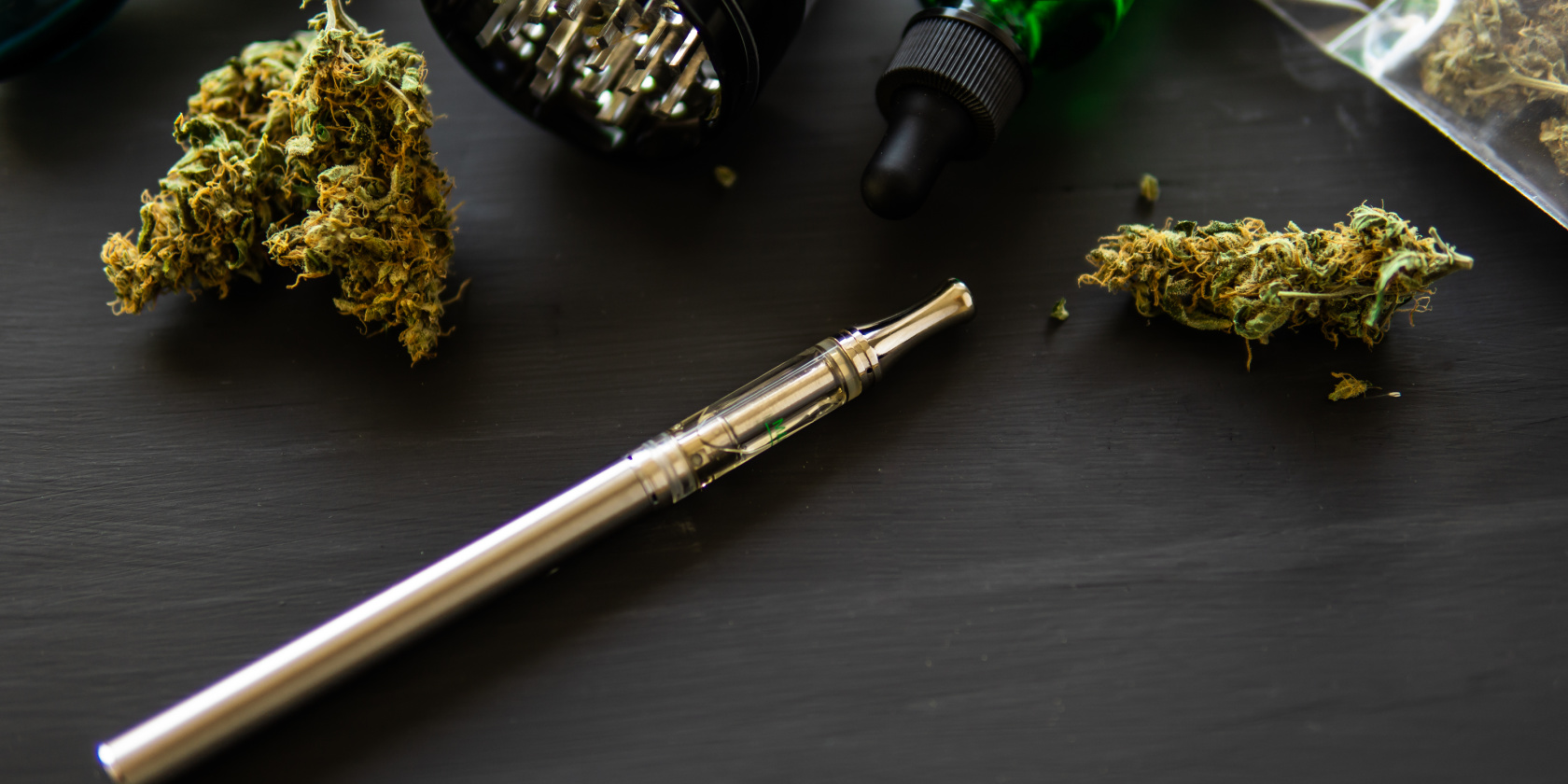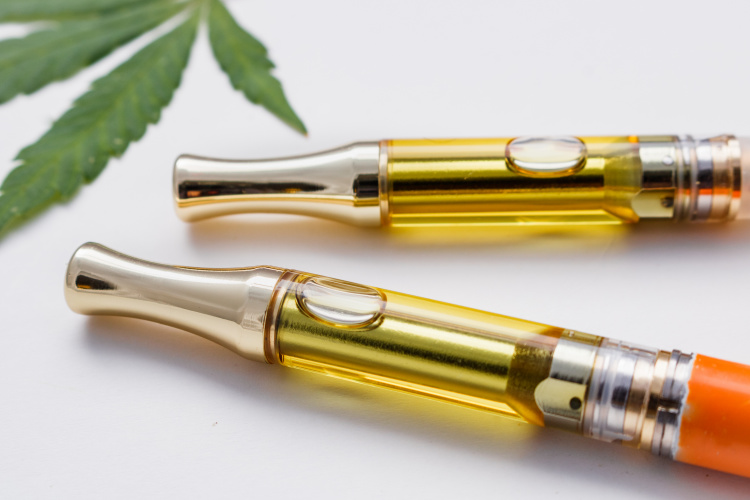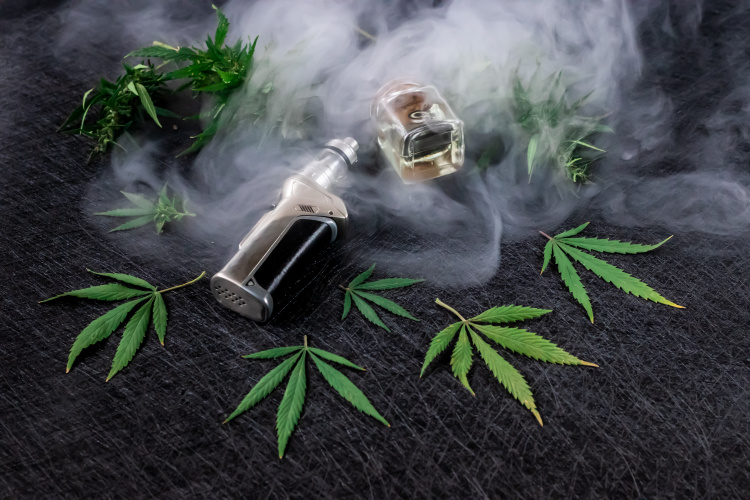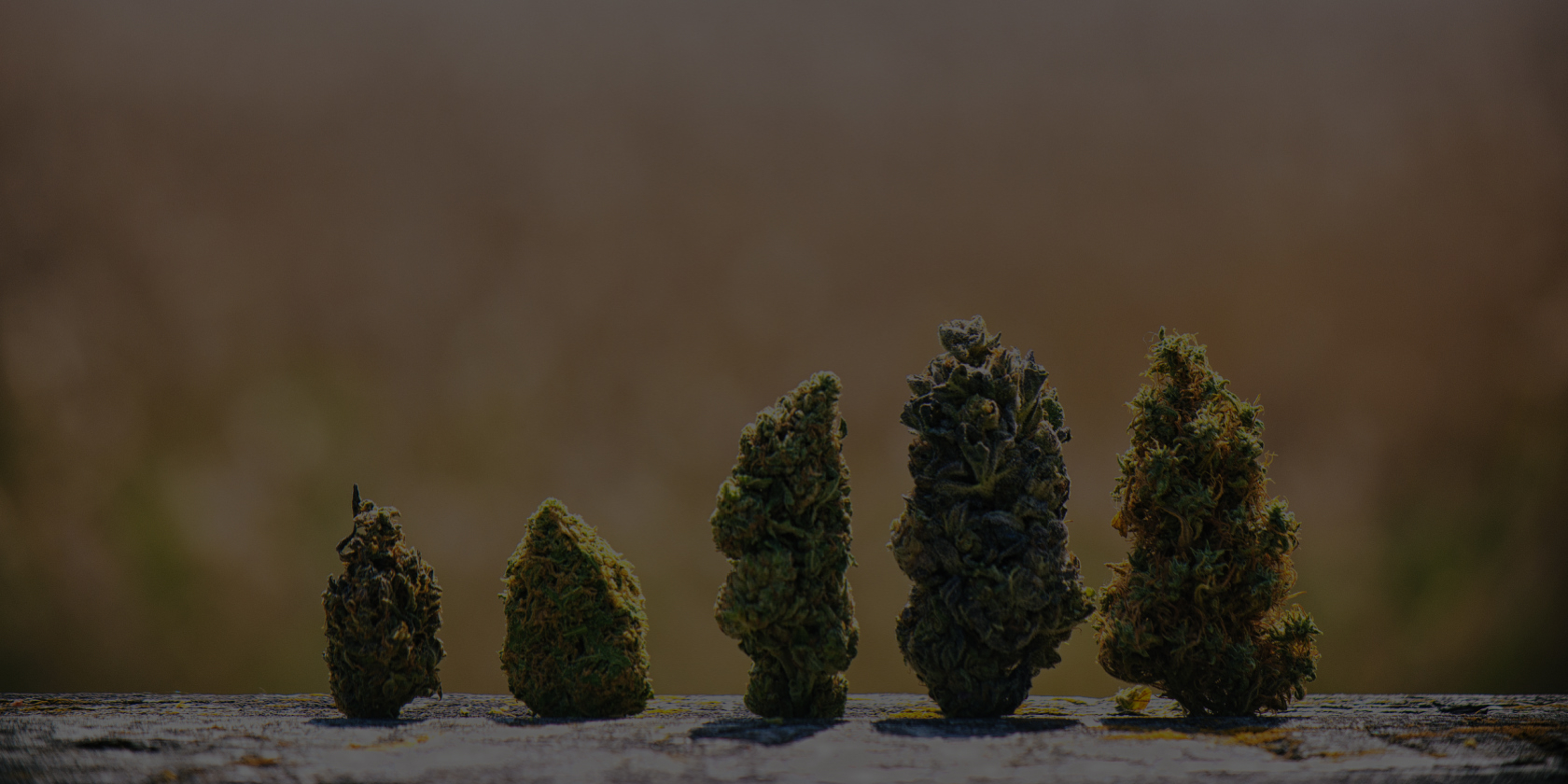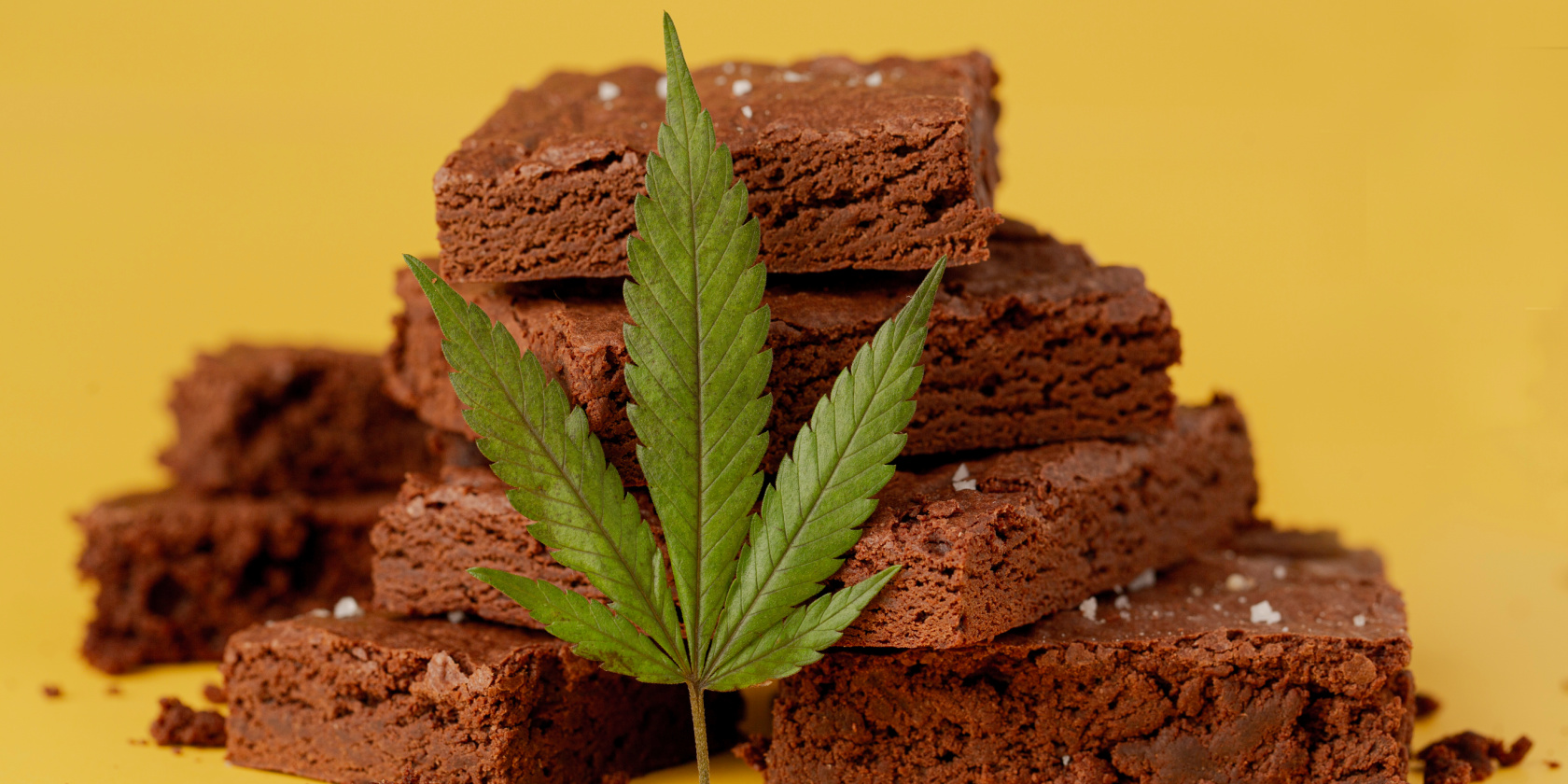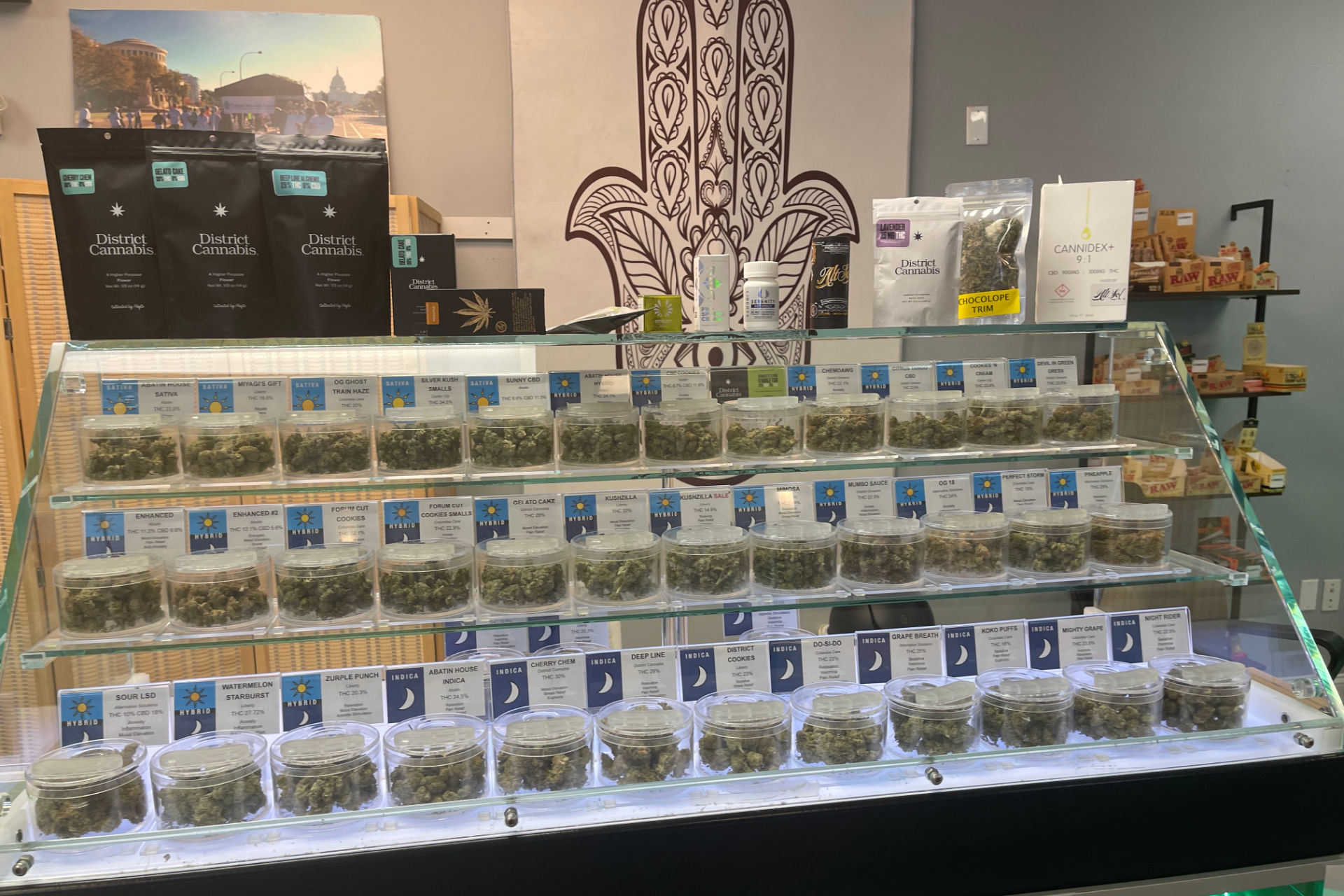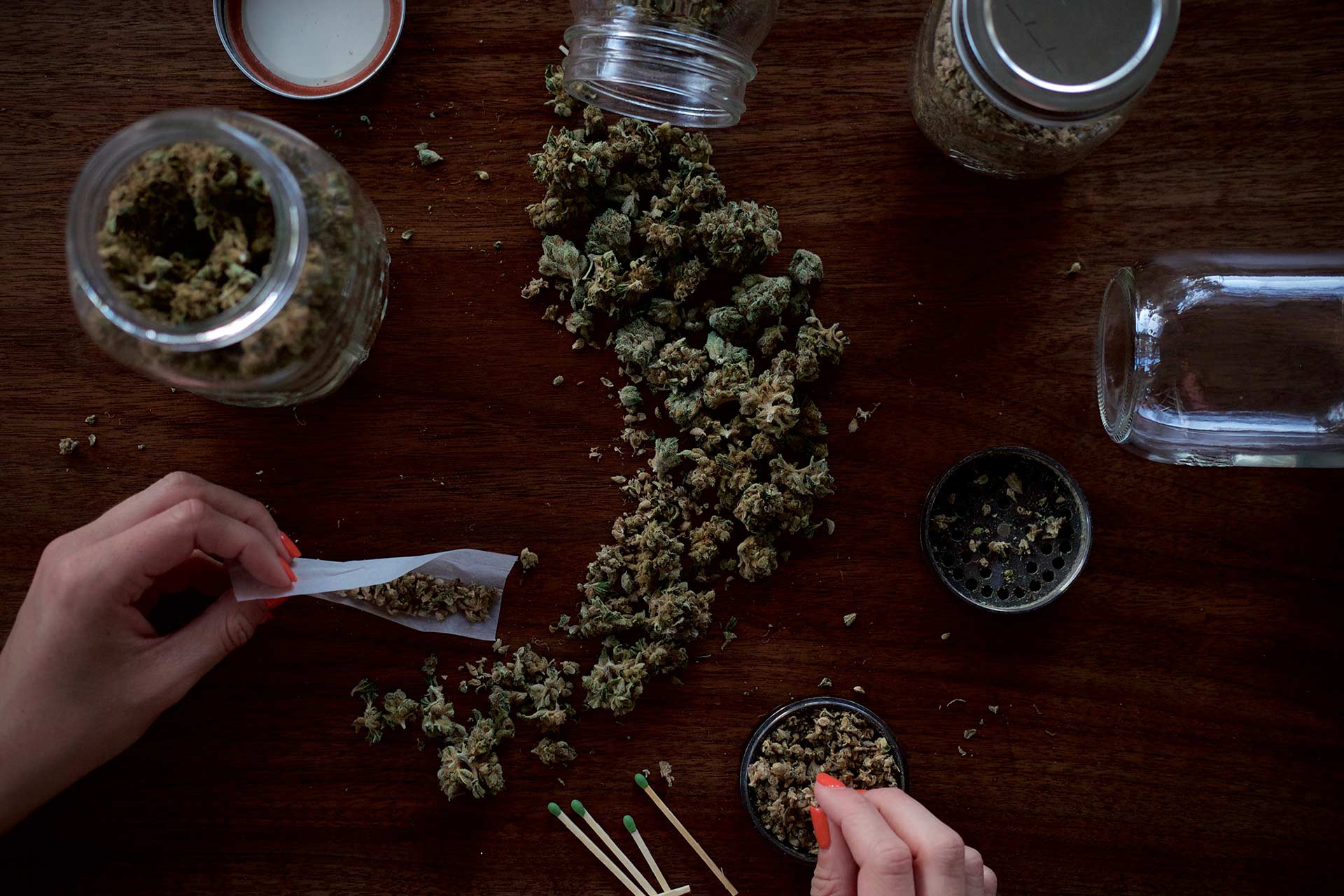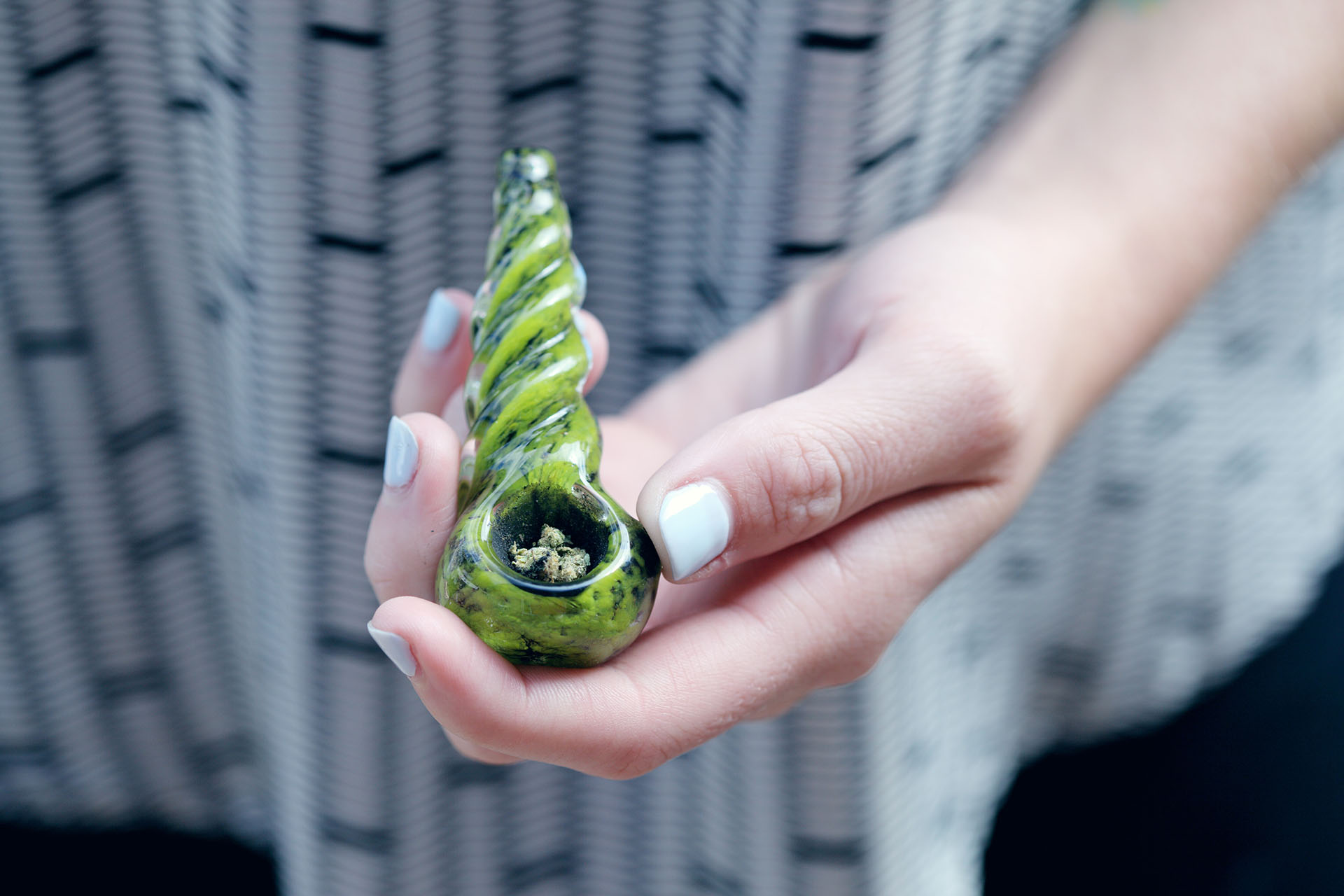Strain Profile: A Complete Guide to the Ridgeline Lantz Strain
If you're tuned into the cannabis scene, you've probably heard of the legendary Cookies line of indica-dominant hybrids. A sprawling family of award-winning strains, Cookies cultivars are famous for imparting an unbeatable experience for many fans. The Ridgeline Lantz strain is no different, fusing those classic indica effects with a euphoric wave that keeps going.
Due to its sky-high popularity, when you see Ridgeline Lantz on our menus, act fast! It’s earned its reputation. But before you light up, get the lowdown on this unique cultivar, from its many potential benefits to its fresh scent. We’ll dive deep and go over everything you need to know, including:
- Is the Ridgeline Lantz strain indica or sativa?
- What’s the Ridgeline Lantz strain’s potency?
- Can I grow Ridgeline Lantz at home?
…and much more. Ready to stock up on your new favorite strain? Let’s roll!
Ridgeline Lantz: Legendary Strain Origins
Carefully honed by Humboldt County’s Ridgeline Farms over years of meticulous breeding, this descendant of the Runtz family is officially turning heads. Tracing cannabis lineage can sometimes be tricky, but when it comes to a powerhouse strain like Runtz, the story is crystal clear.
Created by Ray Bama and Nick of Cookies Fam, along with Yung LB of Runtz Crew, the Ridgeline Lantz strain genetics include not only a Runtz offshoot—but two prior winners of the prized Emerald Cup:
- Ridgeline Runtz
- Green Lantern
Ridgeline Runtz's claim to fame is its heavenly aroma: Fruity, tangy, and darn near irresistible. Inhale this mouthwatering hybrid, and you may feel a durable euphoria spreading up and down your spine. As for Green Lantern—the result of Green Crack and White Rhino—some say it dates back to the ‘60s, while others believe it’s a newer creation. Wherever it came from, this sativa tends to deliver a notably chill euphoria for many of its fans, along with a pine-scented, spicy aroma that’s sometimes compared to Jack Herer.
Is Ridgeline Lantz Indica or Sativa?
You’ve probably heard the terms indica and sativa before. While they may not always be scientifically precise, they’re still a handy way to predict the effects of different strains.
- Indica: Includes the classic Kush strains we always keep in stock. Indicas are known for their deeply relaxing “body high,” making them a go-to for tackling stress, muscle aches, and chronic pain.
- Sativa: Includes the legendary Jack Herer strain. Sativas tend to be more cerebral, sparking creativity for many and delivering an uplifting buzz.
Where does the Ridgeline Lantz strain fall? This cultivar is technically an indica-dominant hybrid, which means you’ll enjoy the effects of both its indica and sativa genetics, but they may lean a little more on the indica side of things.. You may feel a euphoric lift, mood-boosting effects, and a delightful wash of physical relaxation.
How Potent Is Ridgeline Lantz?
Ridgeline Lantz is no lightweight—it typically boasts a high THC content, often reaching 25% or more. As the primary cannabinoid responsible for cannabis’s signature euphoria, THC is the driving force behind this strain’s powerful, mood-lifting effects. That said, potency matters, especially for those new to cannabis. This strain hits hard, so it’s best to start low and go slow to fully enjoy the experience without overdoing it. Respect the flower, and it’ll treat you well!
Effects and Potential Benefits
Beyond pure enjoyment, Ridgeline Lantz may also offer some notable therapeutic benefits. According to some who’ve tried it, its powerful euphoria is just the ticket for reducing stress and anxiety. Others have reported its deeply soothing properties, helping many fans address pain and other symptoms.
As for chronic pain, a growing number of studies suggest that cannabis may help people manage physical discomfort without having to turn to opioids for pain management.
What Does Ridgeline Lantz Look and Smell Like?
Visually, Ridgeline Lantz is a stunner—dense, coated in trichomes, and bursting with deep purple hues, it’s nothing if not eye-catching. But what really lingers is the flavor: a fruity, pine-kissed profile that stays with you long after the last exhale.
These distinct aromas and tastes come from its terpenes, the fragrant essential oils that not only define a strain’s scent but may also contribute to its effects. Ridgeline Lantz houses some seriously loud terps, a characteristic that falls into the Runtz family in terms of its sensory attributes.

Limonene is undoubtedly a key player here—it's a bright and citrusy compound that adds a lemony bite to many strains in the Purple family. You’ll also detect a strong presence of pinene, a resinous terpene that’s been linked with some intriguing anti-inflammatory, anti-oxidant, and neuroprotective effects. Together, these terpenes help shape Ridgeline Lantz’s uniquely uplifting yet deeply soothing experience.
Growing Ridgeline Lantz
Since Ridgeline Lantz is a relatively new strain, its grow reports are only now beginning to roll in. However, based on its strong resemblance to Compound Z—another memorably flavorful hybrid descended from the Runtz family—we can make some educated guesses about how the plant will grow.
According to those in the know, this cultivar will reach a short-to-medium height and can produce a decent yield, though it may not be suitable for absolute beginners. You’ll need to pay close attention to pruning and trimming and keep a close eye on light exposure.
Grown indoors, you may expect an 8 to 9-week flowering period. If grown outside, plan to harvest around the end of September or early October, depending on local conditions. If carefully managed, you may harvest 400 grams per M2 inside or 550 grams per plant outside.
Shop Cookies Exclusively at Takoma Wellness Center
Ridgeline Lantz is a true showstopper. Euphoric and delicious, this indica-dominant hybrid is one of the most exciting offerings from the already red-hot Runtz family—ready to stock up? As DC’s only source for Cookies’ Ridgeline Lantz strain and other Cookies products and merch, when you shop with us, you know you’re getting the real deal. Stop by the exclusive source for Cookies in DC: our very own Cookies Corner.
Want to expand your cannabis knowledge? Dive into our blog for more in-depth articles on other strains like Peyote Cookies and Cherry Diesel, along with detailed guides on how to smoke a pre-roll and more.
As D.C.’s top family-run dispensary, Takoma Wellness is dedicated to helping you find the perfect strains and products to suit your needs. Have questions about Ridgeline Lantz or anything cannabis-related? Just ask—we’re always here to help!
What Is Kief? How To Decarboxylate & Use This Ancient Concentrate
Though cannabis concentrates surged in popularity in the 1990s, their roots date back centuries, when ancient cultivators first collected kief and learned how to make hashish. A little-known but highly flavorful cannabis product, kief is the precursor to hash and can be a potent addition to homemade edibles, joints, or bowls.
An easy concentrate to collect, kief remains a favorite potency booster among many cannabis fans, so if you’ve never tried it, you’re in for a treat! But, before you dive in, you should know a few tips and tricks first—read on and get all your questions answered about cannabis kief, how to decarb it, its nuances and effects, and much more.
What Is Kief? The First Cannabis Concentrate
Kief is the grainy powder that collects at the bottom of your grinder and is simply another name for dried cannabis trichomes. The resinous, mushroom-shaped glands that give cannabis flower its characteristic silver dusting and sticky texture, trichomes hold most of the cannabis plant’s beneficial compounds, including its cannabinoids and terpenes, which are responsible for the unique effects and flavors of any given strain.
How To Use Fresh Kief
For fresh kief in a pinch, you can always count on our selection of premium pre-packaged kief, but if you want to try the DIY approach, one of the easiest ways to collect cannabis kief is to invest in a grinder with a kief catcher. After a few uses, you should have enough kief to sprinkle into your next joint or top a bowl of cannabis flower for a surprising burst of flavor and potency.
Kief vs Hash: What’s the Difference?
Though hash is made from kief, they’re not considered the same thing. When kief is further refined and then pressed with the application of heat and pressure, it becomes another form of cannabis concentrate known as hashish or hash. The texture of the two products sets them apart—kief remains a loose, yellowish powder, while hash tends to be a bit more sticky and can even be formed into bricks or blocks.
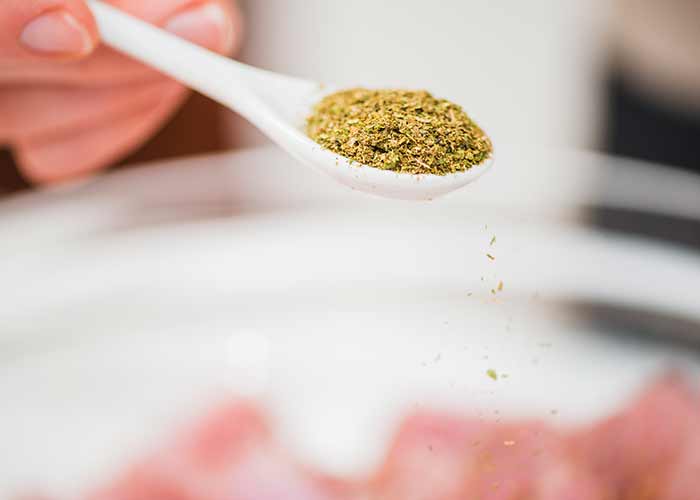
Many modern hash makers still use the same methods as those from centuries ago since the traditional process of making hash is so simple. In the mountainous Hindu Kush region between India and Nepal, cannabis growers still produce a type of hash known as “charas” by rubbing cannabis buds between their hands. The heat and pressure from their palms pack the kief into a paste that is then scraped off and rolled into balls.
What Is Decarboxylation?
If you were to consume raw cannabis flower, you wouldn’t feel any psychoactive effects since raw cannabis doesn’t contain the active form of the cannabinoids THC and CBD. Instead, the trichomes from cannabis flower contain precursor cannabinoids—THCA and CBDA—which don’t impart subjective effects on our bodies. The process of decarboxylation converts these precursor cannabinoids into active THC and CBD through the use of heat.
When you vape or smoke kief, it gets automatically decarbed from your lighter or the heating element within the vaporizer.
Why Decarb Kief?
Is first decarbing kief necessary when making edibles? Not necessarily. Homemade edibles can be cooked or baked without having to decarb the kief or flower beforehand, but the results may be less potent. By decarboxylating your kief or cannabis buds first, you ensure that as many cannabinoids as possible are activated and that nothing goes to waste.
How to Use Decarbed Kief
After it’s decarbed, kief can be used in many different ways.
- Edibles: One of the easiest methods of consuming kief is to simply sprinkle it on top of a finished dish, like a salad, pasta, or piece of toast. It can also be an excellent addition to smoothies or hot beverages like coffee or tea, and there’s even a drink called Bhang that originated in India and is commonly made with cannabis and kief.
- Capsules: You can fill capsules with decarbed kief, which can be a discreet and handy way to microdose THC or CBD.
- Topicals: Adding decarbed kief to topicals and other cosmetics products can deliver beneficial cannabinoids to the skin and hair. Simply mix your decarbed kief into your favorite shampoo, skin lotion, or massage oil.
How to Decarb Kief: Step-by-Step Guide
There are a few different ways to decarb your kief, but the most common and easiest way is with an oven and a few more materials. Here’s how to quickly decarb your kief at home:
Materials
- Conventional or toaster oven
- Kitchen thermometer
- Parchment paper
- Oven-safe pan or container
- Digital food scale
- Kief
- Aluminum foil
Steps
- Preheat your oven to 240°F. For maximum accuracy, use a purpose-made kitchen thermometer placed inside your oven.
- Place a layer of parchment paper on top of an oven-safe pan or container.
- To keep track of potency, use a digital food scale to weigh out your kief.
- Spread the kief on top of the parchment paper in an even layer to avoid mounds or clumps.
- Carefully wrap the top of the container with aluminum foil, then place it in the preheated oven.
- For THC-dominant flower, bake for 30 – 35 minutes. For high-CBD flower, bake for 45 – 55 minutes. Why? CBDA is slower to convert to CBD than THCA to THC.
- Remove the dish from the oven. Keeping the foil on the top, allow it to cool completely.
- Open the foil and take a look—the kief should have darkened slightly and may have melted a bit into a resinous pool.
- Enjoy immediately or store it in an airtight container and place it in a cool, dark place to keep it fresh for weeks.
If you’re more of the hands-off type, you can always invest in a decarboxylation machine, which takes the guesswork out of the process and can ensure that your plant material is decarbed at exactly the right temperature and for exactly the right amount of time.
Shop Quality Kief at Takoma Wellness
A unique product with a history that reaches back centuries, kief is a true mainstay in the cannabis world. The OG concentrate, it’s strong, tasty, and versatile, making it a go-to potency booster.
Want to try some quality kief but don’t want to wait for your grinder to fill up? We’re here for you. Head to our DC dispensary to chat with our knowledgeable team about all things cannabis and find the kief product that’s right for you. At Takoma Wellness, you can stock up on quality kief, artisan-grade flower, high-quality edibles, vapes, concentrates, and so much more. Say hello in person or browse our online menu and place an order for convenient same-day delivery or pickup.
Kief is a potent and powdery cannabis product made from the dried trichomes of flower. Because the trichomes produce the bulk of the plant’s cannabinoids, kief is notably more potent than flower!
Traditionally, kief is pressed into the dense bricks known as hash. But on its own, kief can be sprinkled into joints or onto bowls for a kick of intense flavor and added potency.
If you’re smoking kief, it’s not necessary to decarb it. But if it’s being made into an edible, decarbing it will activate all the cannabinoids and result in the strongest (and least wasteful) product.
Kief is quite a bit stronger than flower. While the strongest flower tops out around 30% THC, weed kief typically consists of 50% – 70% THC.
DC Weed Laws: Everything You Need to Know
Ever since Initiative 71 passed into law in 2014, adults living in the District of Columbia have had an easier time buying, storing, and using legal cannabis. However, just because it’s been decriminalized doesn’t mean there aren’t laws and regulations impacting how, when and where you can get weed in DC. There are still significant differences between medical marijuana dispensaries and retailers claiming to “gift” recreational weed in the US Capitol.
DC residents who are searching for medical or recreational cannabis must take the time to read through the fine print for the latest weed laws in DC, as the district’s laws can be a bit tricky. But don’t worry, we’ve got you covered, and with a better grip on these cannabis policies, you’ll have all the knowledge you need to ensure you’re set up for success.
Recreational Weed Laws in DC
First things first: It is legal to possess recreational cannabis in DC but not to purchase or sell it—this is where DC’s adult-use cannabis laws get a bit murky. Federal restrictions prevent DC from taxing and regulating cannabis sales, but that hasn’t stopped loopholes from forming, and many unregulated storefronts operate throughout the area. These storefronts allow you to purchase small, non-cannabis items and will then “gift” cannabis at checkout, along with your trinket purchase. Though they’re common, since this manner of operation is unregulated, the products they sell are also unregulated. To purchase legal cannabis you’ll need to visit legal and regulated dispensaries.
Restrictions surrounding the possession of recreational cannabis, which is outlined in the District of Columbia weed laws include:
- For those 21 and over, it’s legal to hold two ounces of cannabis for recreational use on private property. DC police can charge residents with a misdemeanor if they discover over two ounces of cannabis on their premises.
- Anyone under 21 who possesses cannabis can face legal consequences if they can not provide a medical marijuana card that’s been approved by a physician and maintained by a legal guardian.
- Current weed law in DC posits no issue with adults owning cannabis-related paraphernalia (e.g., bongs or joint paper) and using cannabis inside of their homes.
- If residents in DC want to “gift” cannabis to another adult in the district, they may do so, provided they transfer no more than one ounce of cannabis, and there’s no value exchange (e.g., a cash sale).
- Cannabis is only legal for consumption in private residences. If adults are caught using cannabis in a public space in DC, they face a misdemeanor charge, and there are even stiffer penalties if cannabis users are caught using this substance while operating a car, boat, or heavy machinery.
In regards to CBD, the District of Columbia weed laws follow the federal guidelines. If someone is in possession of hemp-derived CBD products with ≤ 0.3 % delta-9 THC on a dry weight basis, they are protected from legal ramifications, as hemp-derived products have been federally legalized due to the passing of the 2018 Farm Bill.
Medical Marijuana Laws in DC
Although medical marijuana legislation in DC dates back to the 1990s, it wasn’t until the 2010s that legal dispensaries in the nation’s capitol started offering patients legal cannabis products. Now, with the decriminalization of recreational cannabis, medical marijuana patients in DC have an even easier time finding registered dispensaries and using their medical cannabis on private premises. Here are the current weed laws in DC for medical cannabis patients:
- Medical patients can buy eight ounces of bud from licensed dispensaries on a rolling 30-day period.
- To qualify for a DC medical marijuana card, residents must apply through the Alcoholic Beverage and Cannabis Administration (ABC) and pay applicable registration fees (currently set at $100 for new registrations and renewals).
- Some residents may qualify for a reduced fee if enrolled in programs like Medicaid. Also, thanks to the Medical Marijuana Self-Certification Emergency Amendment Act of 2022, DC residents over 21 have the right to “self-certify” they’re using marijuana for a particular condition when applying for an MMJ card.
- Out-of-state medical marijuana—or reciprocity—is accepted. Reciprocity is extended to those who have a valid patient registration issued by some respective US state or territory programs. You can self-certify for as little as $10 for three days and up to $100 for a full year.
Though you can always head to an unregulated storefront, obtaining a medical cannabis card is quick and simple for both locals and non-residents.
Can You Grow Weed in DC?
If there are any DC cannabis fans with a green thumb, you’re in luck. The current weed laws in DC allow adults to cultivate weed at home, but there are limitations on how much they can grow on-premises.

As long as you’re 21+ in DC, you can grow up to six cannabis plants in your private residence at once. However, keep in mind that only three of these plants can be mature at any given time.
DC Weed Laws: How to Buy Cannabis in the Capitol
Initiative 71 decriminalized the possession, use, and “gifting” of cannabis in the District of Columbia, but it didn’t set up a legal precedent for the sale of cannabis at recreational dispensaries.
While it’s possible to get cannabis through this “gifting economy,” these storefronts are unregulated. In 2024, DC legislators moved forward with legislation targeting unlicensed cannabis gift shops and encouraged shop owners to move toward medical marijuana licensing.
Currently, only registered medical marijuana dispensaries like Takoma Wellness meet DC’s extensive guidelines for legal compliance and lab testing, promising customers a superior selection of high-quality cannabis products with transparent results. With the stricter standards medical dispensaries have to meet in DC—and ease of self-certification to access medical dispensaries—it’s easy to shop medical dispensaries for trusted names and the best selection of lab-verified cannabis.
Shop Premium Cannabis in Washington, DC With Takoma Wellness
The weed laws in DC allow for both medical patients and all adults aged 21 and older to enjoy cannabis. As long as you’re over 21, you can possess up to two ounces of cannabis, consume weed in a private residence, and grow up to six plants on your premises. Medical marijuana patients have even greater freedom to buy up to eight ounces of weed from licensed dispensaries every 30 days and work with a registered caretaker.
If you’re new to buying cannabis in DC, head to Takoma Wellness for more personalized help throughout the process. As DC’s oldest and most respected medical dispensary, we offer a vast selection of premium products and the expertise to help you find what you need when you need it.
Shop in-store or browse our online menu and choose our convenient delivery service.
Vaping CBD: A Gentler Way to Access this Crucial Cannabinoid
If you’re new to the world of cannabis or returning after a break, you’re probably intrigued by the high-tech devices known as vaporizers or “vapes.” Whether they’re the sleek pen-style devices or more full-featured units, they all work on the same basic principle: That by heating cannabis to the point at which its beneficial cannabinoids become volatile, they deliver a cool and potent mist without any potentially harsh smoke or burnt plant matter.
This raises a question: Can you vape CBD? Absolutely! In fact, high-CBD vape pens are among the most popular items at our D.C. dispensary. And if you’re new to the world of CBD vaporizers and vaping CBD oil, you’re in for a treat. Because they work electronically to emit a cool-mist rather than potentially harsh smoke, vapes go easy on our lungs while delivering the same fast-acting benefits as smoked cannabis.
As revolutionary as these devices are, they promise an even greater reward. CBD vaporizers are one of the most popular and fastest-growing segments of the cannabis market, and it’s no surprise why. CBD vapor benefits include the potential to relieve:
- Chronic pain and inflammation
- Anxiety and stress
- Insomnia and sleeplessness
If you’ve been wondering how to access all the potential benefits of vaping CBD oil, you’ve come to the right place! In today’s article, we’ll share everything we know, including specific recommendations for CBD vaping products.
Vaping CBD: How CBD Partners with the Body
As one of the two principal cannabinoids—or “major active ingredients”—in cannabis, CBD has been linked to a number of potential health benefits. In addition to helping treat certain seizures, CBD shows promise in reducing anxiety and stress, addressing chronic pain, even helping us get a better night’s sleep.
Of course, THC—the most abundant cannabinoid, and the one most directly responsible for the marijuana plant’s characteristic “high”—is also linked to a number of potential health benefits in its own right. However, there’s a very major difference. Unlike THC’s intoxication, CBD’s psychoactive effects are not intoxicating, At most, some people report feeling a gentle cerebral “buzz.” This makes CBD-only or high-CBD vaporizers a great choice for those looking for symptomatic relief without potentially distracting psychoactivity.
Both CBD and THC work with the body through the endocannabinoid system (ECS), a vital regulatory network that helps our bodies stay healthy, regulate memory and sleep, and maintain homeostasis, among other functions. In a very real sense, the cannabinoids are “speaking the same language” as this important bodily system. Some researchers believe this is a crucial point when it comes to understanding the wide range of potential benefits associated with CBD, THC, and other cannabinoids.
Potential CBD Vape Benefits
As we referenced a moment ago, the key distinguishing point about all vaporizers is that they heat (rather than burn) cannabis. Whether the cannabis in question is flower, concentrate, distillate or some other format, the principle is the same: By heating the material to the point at which the cannabinoids, terpenes, and other compounds become volatile, vapes deliver all the medicinal benefits and none of the smoke.
This begs a question: Is smoking cannabis bad for your lungs? While there’s not a consensus, the majority opinion is that it’s objectively less harmful than smoking tobacco. That said, smoking anything—including cannabis flower—still brings potentially irritating smoke into our lungs. And if you’re focused on leveraging the benefits of cannabinoids such as CBD, it’s a good idea to reduce any potential irritants from entering your airways.
Some of our customers are concerned that the experience of vaping CBD is less powerful than smoking it. That’s a contentious question. While some users claim that smoking cannabis delivers a more intense high, remember here that the point of vaping CBD isn’t to experience maximum intoxication. And in fact, compared with inhaling smoked cannabis, the bioavailability (or medical activity of the cannabinoids) is actually higher when using a vape. For this reason and others, we still recommend that those primarily interested in the medicinal effects of CBD try vaping as a smoother, less potentially irritating alternative to smoking.
By now we’ve covered many of the potential benefits of vaping CBD. Now we’ll segue into a discussion of a few products designed to deliver this medically active compound.
Vaping CBD: What to Look For in a Vaporizer
There are several options when looking to purchase a vaporizer, since you can vaporize the active ingredients in cannabis from flower directly or from cannabis concentrates.
The popular 510 threaded vape pen batteries accept cartridges from many different brands and producers, so you can use the same battery with any number of oil-filled cartridges—including those that contain higher levels of THC should you want to try that route at some point.
There are also vaporizing units, both handheld and tabletop, made specifically for vaporizing cannabis flower only. But of course, vaping CBD from a vaporizer capable of working with flower demands, well, flower. Because a growing number of our customers have expressed interest in high-CBD strains of flower, we make sure to always have at least a couple on hand. You can see what’s fresh and new by checking our selection of high-CBD, low-THC flower strains.
Or, you might choose a handheld or tabletop unit designed to vaporize potent cannabis concentrates. Lastly, there are units that can vaporize both flower and concentrates, and these units often come with different attachments for each.
Regardless of which option you choose, you can expect the same fast-acting effects as with smoked cannabis, only delivered in a delightfully gentle and cool mist.
CBD Vaping: Final Thoughts
With the cannabis market expanding on a constant basis, it’s truly exciting to see the high-CBD products that are constantly hitting our dispensary shelves. From high-CBD flower to CBD-infused edibles to CBD-rich tinctures and oils, there’s seemingly no limit other than the skill and imagination of local cultivators, processors, and manufacturers.
If you’re interested in learning more about how CBD works with your body to deliver specific benefits, we’d love to help! As Washington’s #1 family-run medical marijuana dispensary, we’re dedicated to helping you get the very most from your cannabis experience. Have any other questions about vaping CBD (or any other questions in the wide world of cannabis)? Just ask! We’re always here to help.
Heavy Hitters: What Are The Strongest Weed Strains?
You don't have to know much about cannabis to have heard about THC, its main active ingredient. It’s most responsible for the plant’s iconic effects, including deep relaxation, euphoria and an increase in appetite, and is a major indicator of its strength. But that’s only one piece of the puzzle. The way you feel from different strains of cannabis can also be attributed to its unique chemical makeup and how it was grown.
With so many new strains hitting the market every day, it's becoming more difficult to track precisely who holds the current record for the highest THC flower. At Takoma Wellness, we’re proud to support our local DC growers, and are fortunate to have a wide selection of potent, craft-grown strains to choose from. Keep reading to understand just what makes any particular strain potent, along with a curated list of DC’s highest THC strains. Ready? Let’s get rolling!
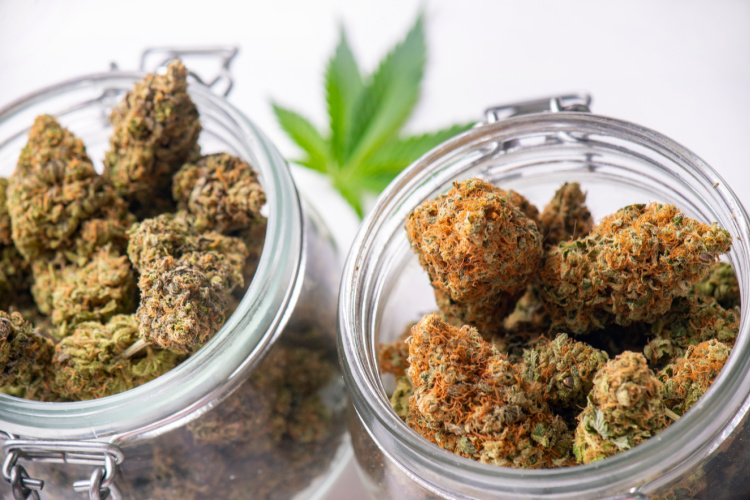
How Cannabinoids and Terpenes Affect Potency
Though the best strains of weed usually have the highest THC percentages, these numbers don’t account for the complicated interrelationships of cannabinoids, terpenes, and other compounds found within the plant that contribute to its overall effects.
Each batch of cannabis will also have unique properties dependent on countless external factors, including the skill of the grower, soil conditions, temperature and humidity, light, and how long it’s been cured—to name just a few.
Cannabinoids
Cannabinoids are a family of over 100 natural compounds in the cannabis plant. This family includes both intoxicating and non-intoxicating cannabinoids like CBD, CBN, and CBG. Recent studies suggest that some cannabinoids may work together to produce effects, also known as the "entourage effect.”
For example, CBD appears to inhibit the landing of THC molecules on the brain's cannabinoid receptors. So, even if a strain has a high concentration of THC alongside a notable concentration of CBD, it may not hit as hard as a strain with lower THC but no CBD. The total amount and ratios of all cannabinoids determine the experience you're most likely to get from cannabis flower, so check out the cannabinoid content on lab reports if you’re interested in tracking how different strains affect you.
Terpenes
As with cannabinoids, aromatic terpenes similarly impact the overall effects of any particular strain. Some researchers found that certain terpenes, like myrcene, are associated with sedating qualities, while others, such as limonene, may have a more stimulating effect. The more you learn about the nuances of all these compounds, the easier it will be to distinguish the likely effect of different strains and how you can use them for your specific needs.
7 Strong Weed Strains to Try Today
While microdosing cannabis has become more popular over the years, some cannabis patients actively search for the best strains of weed available. Why? High-THC strains can offer an immediate and profound impact with just a little bud, delivering the exact kind of relief patients may desire.
Looking for some new strains to find relief or simply relax? Though our menu is constantly rotating, we feature an array of high-THC strains from many quality brands. Here are some of our recent favorites:
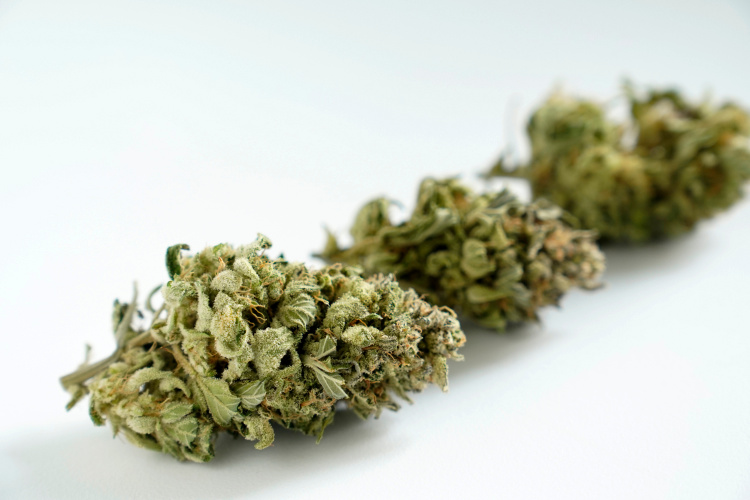
Vice City by Alternative Solutions
Vice City is a balanced hybrid with a smooth flavor and a soothing impact. It’s a mix of Sunset Runtz and Scotty 2 Hotty, often producing an initial sativa "head buzz" followed by a deeply relaxing body-heavy sensation typical of indicas. With 28.7% average THC concentrations, Vice City certainly isn't for cannabis newcomers, but it's also not the strongest weed strain out there.
Considering its balanced properties, earthy and sweet aromatics, Vice City may be the perfect entry point into the world of higher-potency strains.
Average potency: 28.7% THC
Banana Candy by Center City Cultivation
Also known as Banana Candy Kush, Banana Candy is one of the more mysterious names on our list of the best weed strains. Although it's clear this cultivar has sweet and fruity aromatics, it's unknown who first bred it or what flowers they used in its creation.
It's likely Banana Candy gets its banana scent and indica edge from the iconic Banana Kush hybrid, but other than that, we can only guess whether strains like Skunk, OG Kush, or Haze play a role in its genotype. We do know, however, that this Banana Candy hits hard.
Average potency: 28.7% THC
Motorbreath by Alternative Solutions
With a name like "Motorbreath," you'd better expect this strain to slap your nostrils with pronounced industrial aromatics, especially dank diesel. Although Motorbreath has plenty of lemon, earth, and hash aromatics, it's the gassy notes that take people's breath away when smoking this strain, not to mention the high THC content.
Typical cuts of Motorbreath have lab reports with a THC content of 32.3%, making it a much more intense experience than many classic industrial strains. In fact, the parent strains of Motorbreath—Chemdawg and SFV OG Kush—share a lot in common with another iconic hybrid: Sour Diesel. So, anyone who wants to take their Sour D to the next level will probably appreciate a ride with Motorbreath.
Average potency: 32.3%
KY Jealous by Columbia Care
Made with a blend of Watermelon Mimosa and Jealousy, KY Jealous is a hybrid strain that’s all about sweet and sugary notes, but it also has a bold, spicy, and citrusy undercurrent that can keep things interesting. The high THC content gives KY Jealous its status as one of the best pot strains on this list.
Average potency: 32.3%
Space Force One by Molecular Farms
Space Force One may be just the right spacecraft to hop aboard whenever you need to fly away from earthly concerns. Made by California's Molecular Farms, this hybrid strain has average THC concentrations of around 32.6%, which is plenty of fuel to take even experienced consumers to new galaxies.
With its blend of OG Kush and Cookies, Space Force One has reliably high traces of indica genetics, which provides a sweet, hashy, and mellow experience. Add plenty of the terpene myrcene, and Space Force One is a fantastic pick when you want to go for an otherworldly journey right from your favorite chair or couch.
Average potency: 32.6%
Forbidden Fruit Cake by Columbia Care
We've all heard of the forbidden fruit in Genesis, and cannasseurs have probably already tasted the Forbidden Fruit hybrid—but what about Forbidden Fruit Cake? Unsurprisingly, Forbidden Fruit Cake combines two legendary hybrids in its namesake—Forbidden Fruit and Wedding Cake—to produce a deliciously sweet dessert hybrid. The strong indica properties and THC percentages make Forbidden Fruit Cake one of the highest THC strains available in DC.
Average potency: 33.1%
Red Bullz By Columbia Care
Red Bullz may be the epitome of eye candy. When cured properly, this hybrid mix of Grape Gas and White Runtz has an alluring powdery white appearance with plenty of orange and red streaks. Considering this sticky strain oozes white trichomes, it makes sense that it has incredible average THC percentages hovering around a whopping 35.6% and earning it the title of highest THC strain on this list.
Regarding flavor, Red Bullz takes on both the industrial and fruity sweet notes from its parent strains, giving it a weird and wonderful blend of fresh grapes and gasoline. Our customers also typically report that Red Bullz has even-balanced effects with a slight indica edge that is more likely to make you feel chill than buzzy.
Average potency: 35.6%
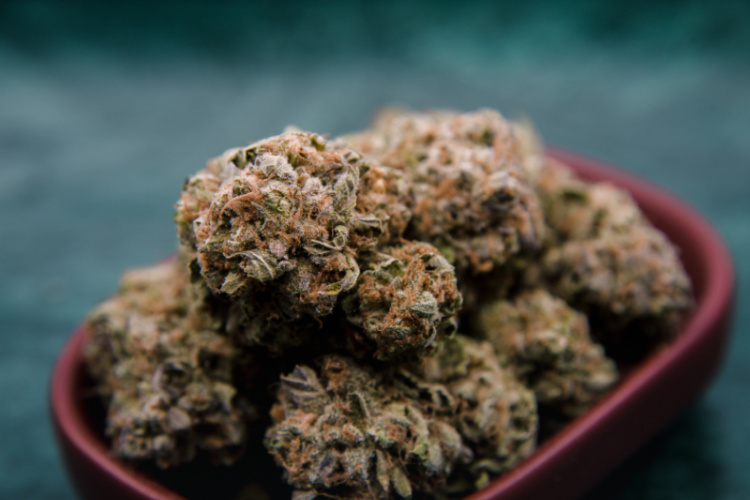
Shop Strong Weed Strains at Takoma Wellness
While it's tempting to go straight for the best weed strains, that may not be the right call for every medical marijuana patient or adult-use consumer who comes through our doors. Some people prefer the highest THC strains, but others go for lower-intensity strains and everything in between. Come on in to our DC dispensary to chat with our team and find the cannabis flower that’s right for you.
But if you’ve been wanting to explore the wide world of strong THC strains, we’ve got you covered. At Takoma Wellness, you can find dozens of artisan-grade flower, high-quality edibles, vapes, concentrates, and so much more. Visit us in-person or browse our online menu for more details.
How To Make Pot Brownies: Step-by-Step Recipe
A delicious, long-lasting, and smoke-free way to enjoy cannabis, the quintessential pot brownie—or “happy brownie” as it’s been called throughout the years—has been refined and perfected over decades and can now be found in as many variations as there are cannabis strains.
Infused brownies are a fun and convenient way to consume cannabis, and though you can always find pre-made options with fancy ingredients lining dispensary shelves, making your own at home can be well worth the time and effort. After all, who doesn’t love a warm, gooey brownie fresh from the oven? Add a dose of THC, and you’ve got the perfect after-dinner dessert or midday treat.
If you’ve never made weed brownies before or want to refine your recipe, read on for our easy, tasty cannabutter and pot brownie recipes. With just a few ingredients, you’ll be on your way to chocolatey and stoney bliss.
Decarboxylating Your Cannabis
There are a couple of things you’ll need to do before you can actually start making pot brownies. If you’re starting with raw plant material, the first step is to decarboxylate your cannabis.
What Is Decarboxylation?
Decarboxylation is the process that activates the cannabinoids in your cannabis. Mainly, it converts non-intoxicating THCA into activated and intoxicating THC through gentle heating.
Once decarboxylated and consumed in an edible, THC transforms further into 11-hydroxy-THC as it passes through your digestive system with effects that can feel more potent and last for several hours. The effects from edibles are usually felt between 30 - 45 minutes after ingestion, but it’s recommended to wait at least 90 minutes from the first dose to the second dose to avoid consuming too much too quickly.
How to Decarboxylate Cannabis
You can easily decarboxylate cannabis in your oven. Here’s a quick step-by-step guide to get you on your way:
- Preheat the oven to 225°F
- Roughly grind up your flower and spread it out over a baking sheet lined with foil or parchment paper
- Set a timer and place the baking sheet in the oven for about 30 minutes
- When finished, remove and let cool. Your finished flower should have a light brown tinge to it
Pro Tip: Too high of heat or too long in the oven, and your cannabis will go past THC activation and into useless burnt flower. So keep a careful eye on your cannabis and check on its progress periodically.
How to Make Cannabutter: Step-by-Step Guide
The amount of decarbed cannabis and butter you specifically need will depend on how much butter you want to make and how potent you want it to be. This can involve a bit of math, but this nifty Scientific Edibles Calculator is a great alternative for those of us who aren’t so good with numbers.
Materials
- Ground decarbed cannabis
- Butter or oil
- Double boiler or slow cooker
- Cheesecloth
- Mason jar
Homemade Cannabutter Recipe
- Melt butter or put the desired amount of oil in the top pan of your double boiler with water on bottom
- Once melted or heated to a low heat of roughly 225°F—low to medium-low heat stove top or low heat in a slow cooker—add your decarbed cannabis
- Stirring occasionally, let the cannabis and butter infused together for at least 2 and up to 6 hours.
- Remove from heat and allow to cool for 10-15 minutes, but do not allow it to fully cool. It should still be runny for the next step
- Place the cheesecloth over the top of your mason jar and slowly strain the plant material from the melted butter or oil into the jar
- Place a lid on your Mason jar for storage. If saving for later, the butter and oil can be kept for the same shelf life as their non-infused counterparts
Do You Need Cannabutter to Make Weed Brownies?
In theory, you could just toss your decarbed bud directly into your brownie mix, but this method tends to make edibles taste too weedy and skunky. Additionally, there’s a good chance you’ll end up biting directly into little chunks of bud when you eat your brownie, so it might not be the best textural experience.
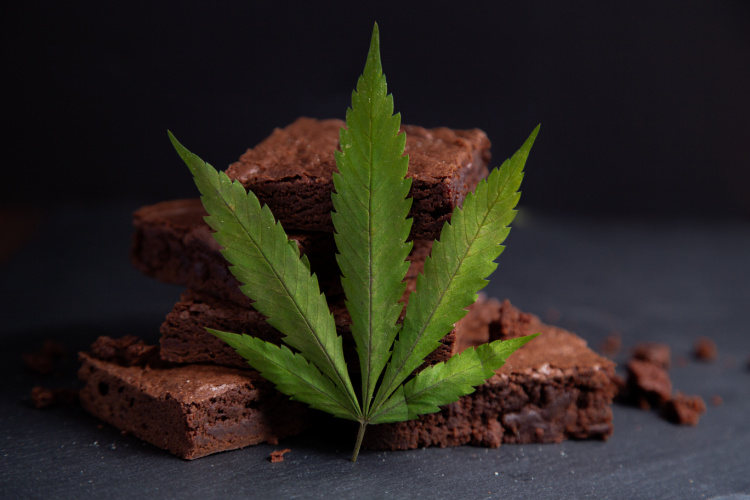
Instead, to make the best-tasting homemade weed brownies, you’ll want to use your decarboxylated bud to make cannabutter or canna-oil first and then infuse it into your recipe by wholly or partially replacing the non-infused butter with your infused option.
How to Make Weed Brownies
Now that you’ve gone through the steps of decarbing your cannabis and infusing it into your cannabutter, it’s time to make the brownies.
Materials
- Two mixing bowls, medium and large
- A wooden mixing spoon or spatula
- A whisk
- A saucepan
- A square baking pan (about 8 inches)
- Cooking spray or cooking oil
Ingredients
- ½ cup all-purpose flour
- ¼ teaspoon baking powder
- ¼ teaspoon salt
- 1 cup white sugar
- ⅓ cup cocoa powder (or pre-made brownie mix if you’re in a pinch)
- Two large eggs
- ½ cup cannabutter
- One teaspoon vanilla extract
Step-By-Step Pot Brownie Recipe
- Preheat the oven to 350°F. Spray or otherwise lightly grease the baking pan. Set aside.
- Gently melt your cannabutter in a saucepan set to low-medium heat, removing from the heat as soon as it’s melted. Allow to cool for five minutes
- In a medium bowl, mix the flour, baking powder, salt, sugar and cocoa powder (or brownie mix)
- In a large mixing bowl, whisk together the eggs, cannabutter, and vanilla extract until light and frothy
- Sprinkle the dry mixture into the cannabutter mixture and stir until just combined
- Pour it into a greased baking pan, spreading the mixture evenly throughout the pan
- Place the pan in the oven and let it bake for 30-40 minutes, until a toothpick comes out mostly clean
- Allow brownies to cool for at least an hour
- Cut the brownies up into individual squares according to the desired number of servings and potency
Shop DC’s Best Cannabis for Homemade Weed Brownies
Looking for some high-quality cannabis perfect for baking brownies or other edibles? Visit our dispensary today or check out our online menu and shop a wide selection of premium cannabis flower that are great for baking, vaping, and smoking. Don’t forget to ask about our excellent deals and discounts so you can make tasty treats without breaking the bank.
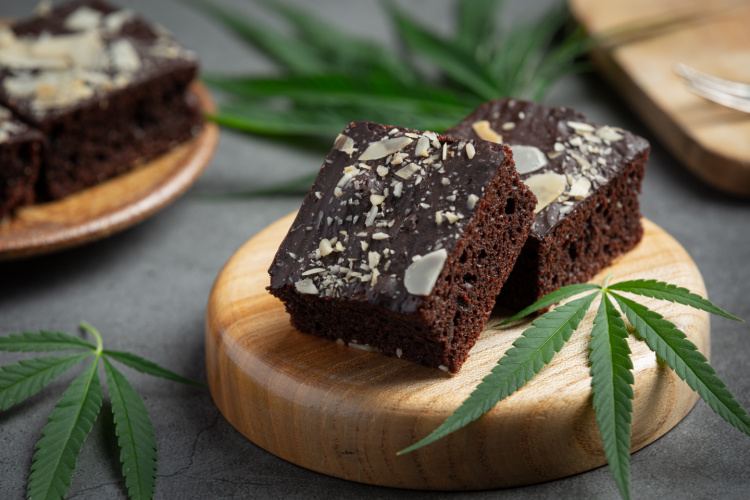
Want to learn more about cannabis edibles? Check out our edibles product guide for more.
An Insider’s View on Washington D.C.’s Best Medical Cannabis Dispensary
Medically reviewed by Katherine Golden, RN, and Eloise Theisen, NP
Written by Denise Gonzalez-Walker
We recently caught up with Stephanie Kahn, BSN, for her perspective as a cannabis nurse and Takoma Wellness Center medical dispensary co-founder. Stephanie shared her insights from leading Washington, D.C.’s longest running legal medical dispensary and what she wished every new cannabis patient knew before visiting a dispensary.
(Note: This blog post was edited on 9/9/21 to more accurately reflect Washington, D.C., cannabis regulations.)
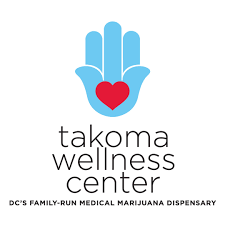
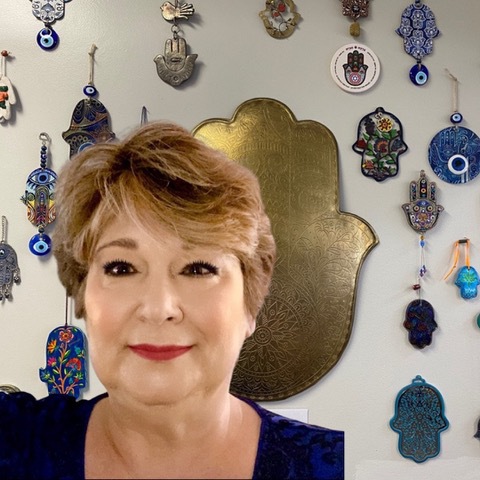
Step into Leaf411 member Takoma Wellness Center medical cannabis dispensary in Washington, D.C., and the first thing you’ll notice is the hamsa, a hand-shaped design that is believed to offer protection and good fortune, that traces back to ancient Mesopotamia.
The hamsa symbol is fitting, given that it shares a long history that runs parallel with cannabis. The cannabis plant can also be tracked back thousands of years ago when it was used medicinally, including in Mesopotamia. The hamsa symbol also holds an important place in the Jewish culture shared by founders Stephanie Kahn, BSN, Rabbi Jeffrey Kahn and their son Joshua Kahn.
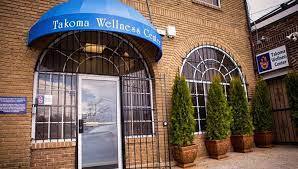
With a background in healthcare and the spiritual community, the Kahns already had extensive experience helping patients before entering the cannabis industry. One cannot help but think of Takoma Wellness Center’s extensive hamsa collection as a symbol of their caring and hope for the patients who visit the store.
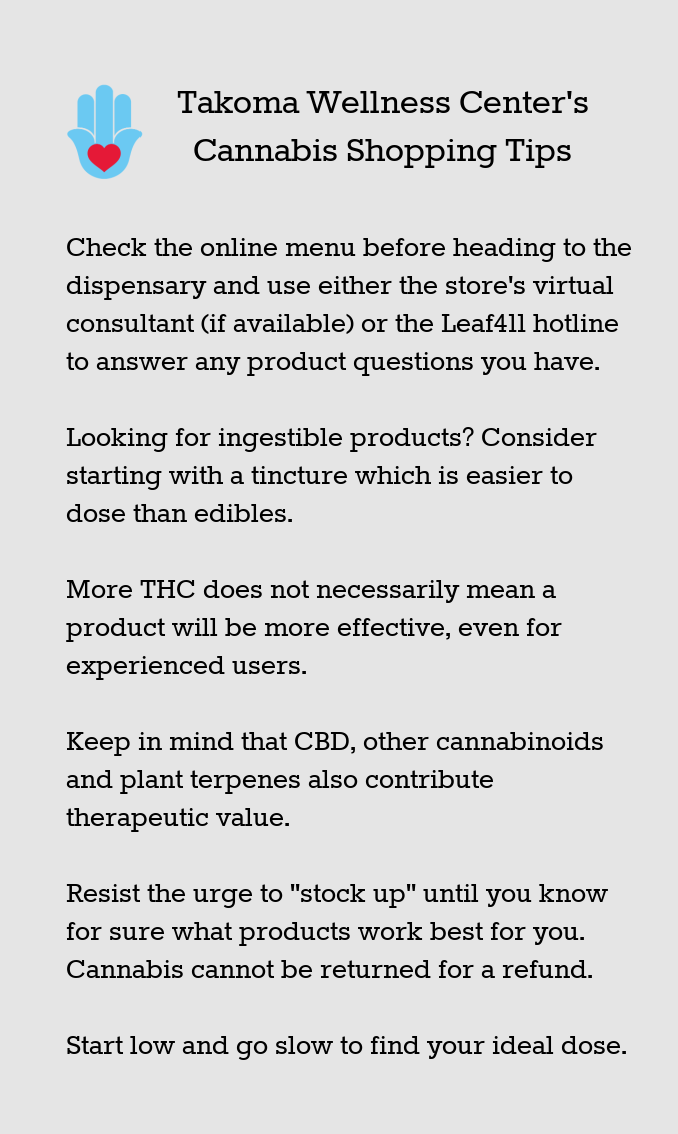
Navigating Washington, D.C.’s unique cannabis landscape
Takoma Wellness Center holds a unique spot as the oldest and longest running legal medical dispensary in Washington, D.C. While cannabis remains illegal at the federal level, the plant is legally sold for medical use in the nation’s capital, and possession of small amounts for personal use has been decriminalized.
District residents also support adult use (recreational) cannabis; however, Washington, D.C., is unique in that it’s not a state but a district that is ultimately governed by the US Congress. So far, Congress has blocked the district’s efforts to create a legal adult use cannabis marketplace.
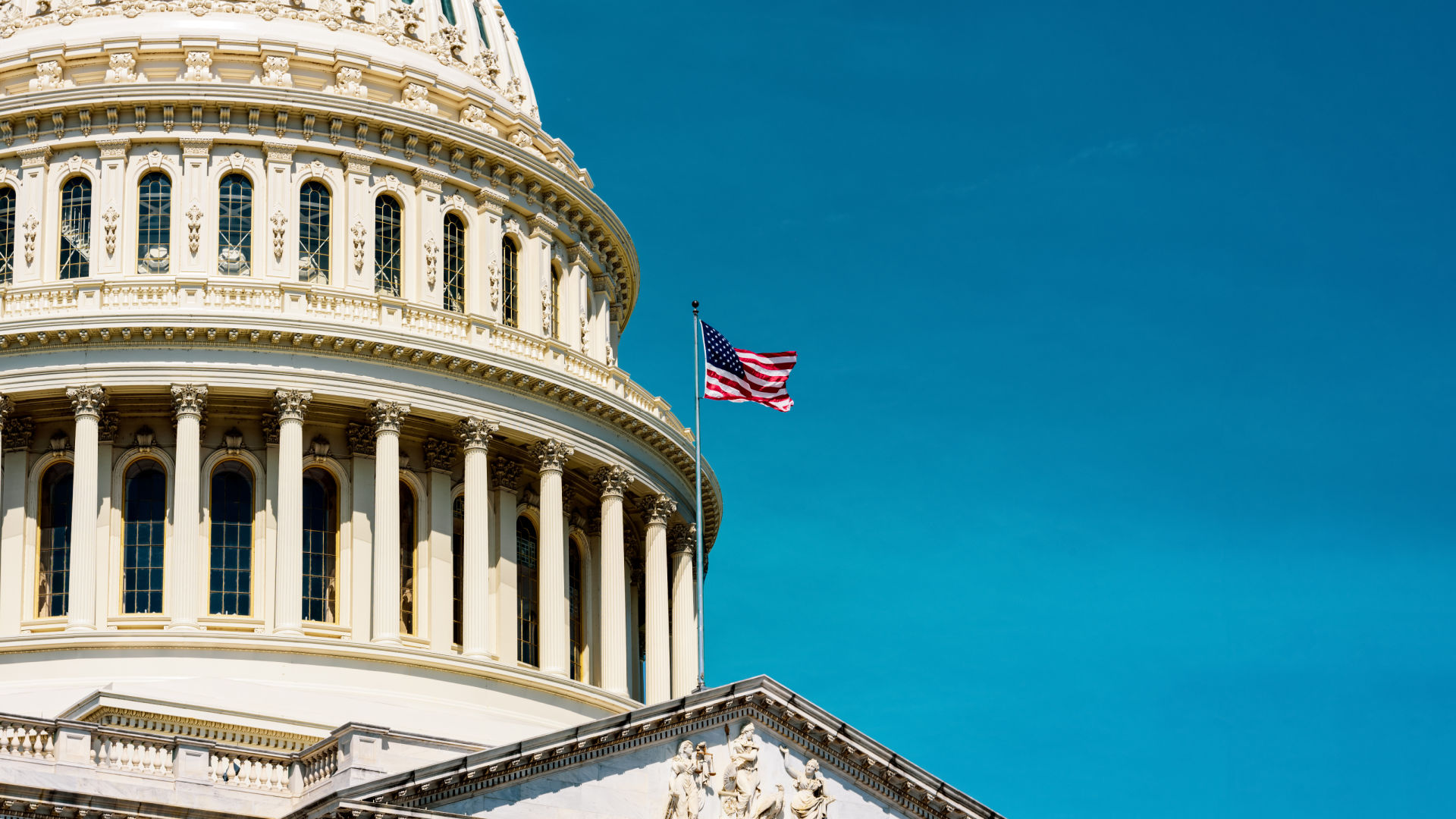
District of Columbia dispensary Takoma Wellness Center accepts out-of-state MMJ cards
Cannabis cannot cross state lines, but marijuana medical cards can in a few states as well as in Washington, D.C. Medical dispensaries in the district accept valid medical cards from any state with a legal medical cannabis program, when that person is visiting the district and buying medicine in-person. (Dispensaries are not allowed to deliver or ship product across state lines due to ongoing federal prohibition that regulates all interstate commerce.)
For Takoma Wellness Center which is located only a few blocks from the Maryland state line and approximately 10 miles from Virginia, this means that over 50% of their customers come from outside the district, mostly from neighboring states. As nearby state marketplaces evolve, however, the mix of patients continues to change.
“We used to get a lot of patients from New Jersey and Pennsylvania, but as their own state programs have improved, there’s less need for their residents to travel to find cannabis medicine that works for their needs,” Stephanie says.
Of course, the capital is also a popular place for people from around the country to visit. For patients who are unable to bring their cannabis medicine with them when traveling, finding a trustworthy local source like Takoma Wellness Center can be a godsend.

Building a medical dispensary around the needs of cannabis patients
Takoma Wellness Center was built around not only providing a wide range of products but also exceptional service to patients, with patient consultants (similar to budtenders) who spend time educating visitors on different options. That commitment has remained even during pandemic challenges.
“Prior to the pandemic, we would spend a lot of time with our patients. That all changed last year with restrictions and the need for social distancing,” Stephanie says.
“A lot of the changes were positive. We were allowed to implement online ordering, curbside service and delivery. The downside, though, was that we were not able to spend the same amount of time in store consulting with patients.”
In response, Takoma Wellness Center developed virtual consults and protocols for patients to check in outside, reducing the time most people needed to spend inside the store. Stephanie says that their relationship with Leaf411 has also helped, with Leaf hotline nurses who are able to guide patients on the phone while looking over Takoma Wellness Center’s extensive online menu.
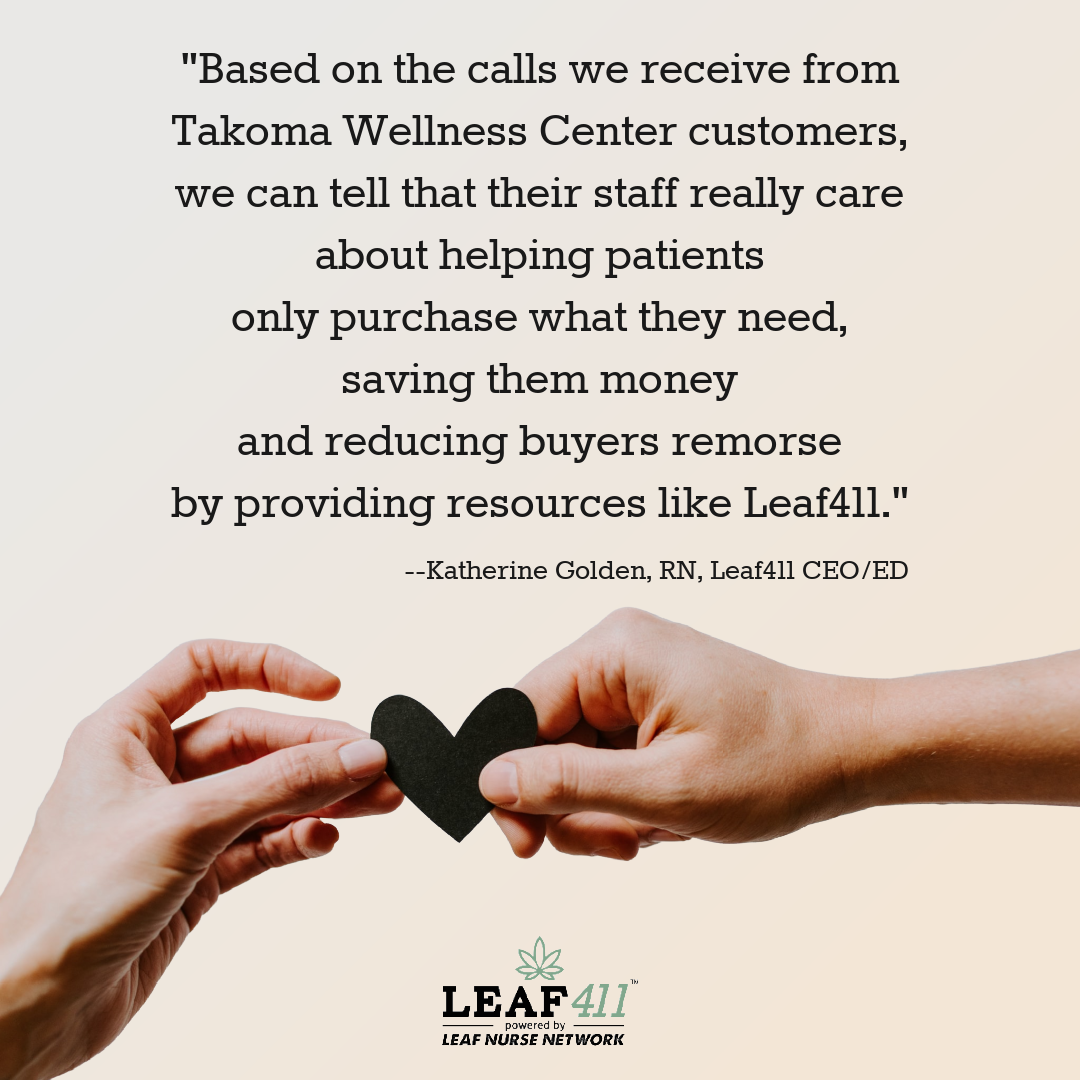
What are the top reasons patients turn to medical cannabis?
Takoma Wellness Center serves patients who are seeking alternatives for a wide range of conditions.
“Pain and anxiety top the list, when it comes to the information that patients share with us. We have patients visiting us who have autoimmune diseases, multiple sclerosis (MS), Lyme disease, Ehlers-Danlos syndrome, fibromyalgia, cancer pain and chemo side effects, who are seeking relief,” Stephanie says.
“We also have a couple of pain doctors in the area who are suggesting cannabis as an alternative to opioids for some of their patients. In my mind, this is a very positive development,” Stephanie says, though she also acknowledges that many other pain clinics continue testing patients for THC, with positive THC tests disqualifying them from continuing with prescription-based pain medications.
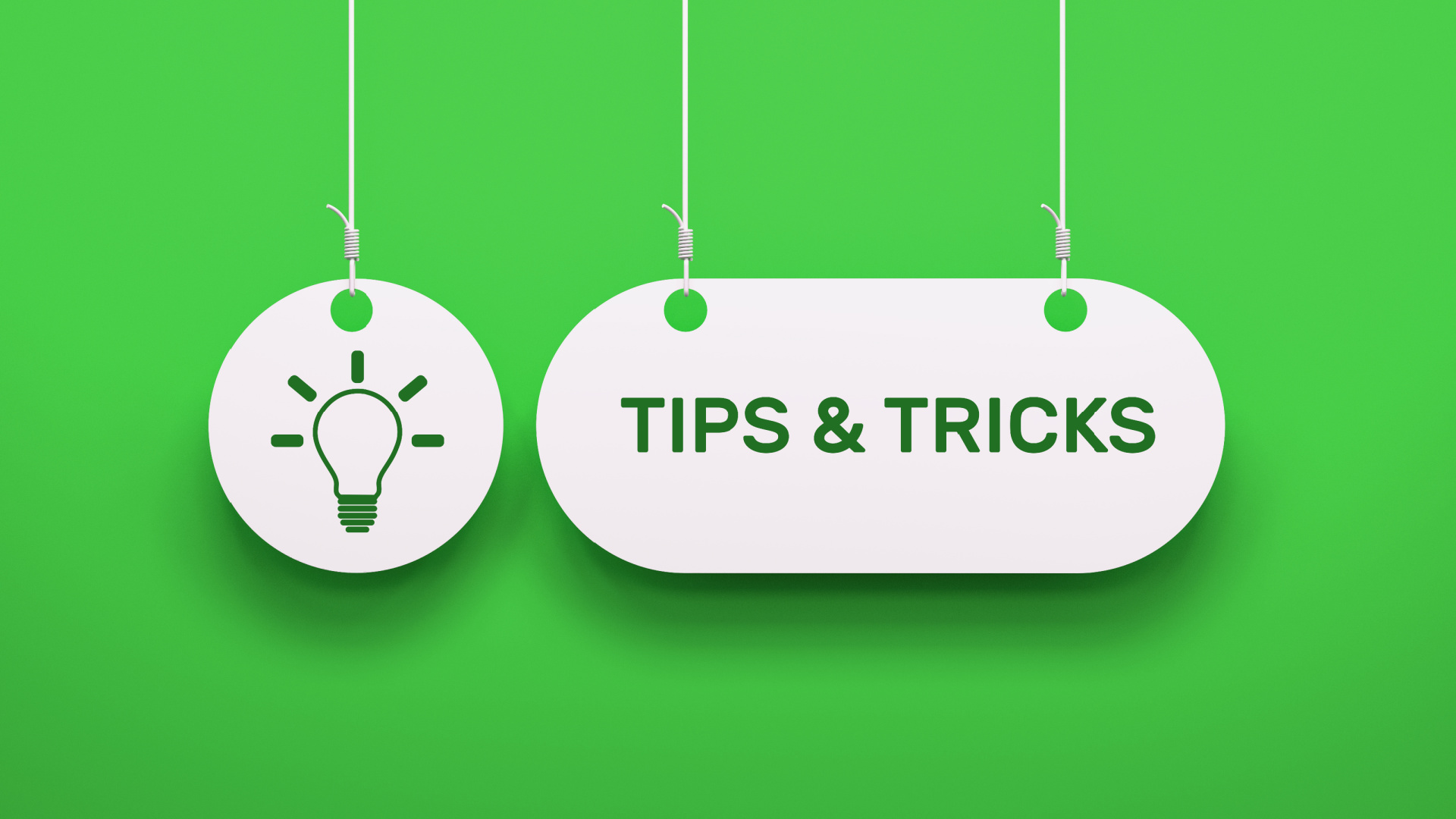
Advice for both new and experienced cannabis patients
Stephanie has spent years helping patients understand the ever-changing cannabis landscape, with Takoma Wellness Center’s product selection informed both by Stephanie’s cannabis nursing background and years of experience hearing from patients on what has worked best. She’s also seen common missteps that new patients make on their first dispensary visit and has some general advice to share.
“A lot of cannabis naïve patients come in wanting to try edibles first. However, we really encourage them to first try tinctures instead. It’s much easier to adjust your dose with tinctures, which is especially important if you’re starting low and going slow,” Stephanie says.
She also sees both new and experienced cannabis users missing out on the full potential of plant medicine when they only focus on finding the highest-THC products.
“Whether the patient has been buying on the street for 30 years or they’re new to cannabis, we often see them looking for the highest THC product when a ratio product containing a balance of THC and CBD might actually provide better relief,” Stephanie says. “Obviously we’re not going to force education on them, but we do encourage patients to explore different product types and often have discounts to make it easier to try new things.”
When trying new products, Stephanie suggests that patients resist the urge to “stock up,” since cannabis products cannot be returned to the store.
“We’ve had customers who are brand new to cannabis who want to buy a half-ounce of cannabis flower or an extra-strength tincture because they believe it will be better than regular strength. While we’re not going to deny them that purchase, we do try to educate them and explain what the problems they might encounter,” Stephanie says.
Stephanie as well as Takoma Wellness Center staff also suggest that patients start low and go slow, understanding that everyone’s endocannabinoid system is different.
“The dose that works best for your friend may either be not enough or way too much for you. The best way to find your ideal dose is to start low and go slow, building up to the dose that works for you,” Stephanie says.
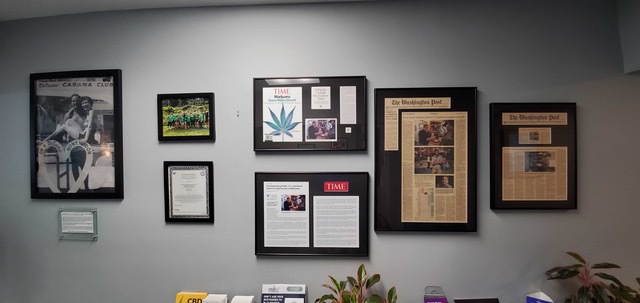
Looking for the best local, family-owned D.C. dispensary with deep ties to the area?
Today’s patients and consumers have more options than ever when it comes to shopping for cannabis medicine. Many are eager to support local businesses that are making a difference and building a sustainable, equitable cannabis industry.
Takoma Wellness Center’s ties to the community run deep. Both of Stephanie’s parents grew up in Washington, D.C. within blocks of the medical dispensary’s current location. It was her parents’ experience using cannabis on doctors’ recommendations that inspired the Kahns to open a medical dispensary. As Stephanie says, “The story of medical cannabis in our city is personal to us—it’s also our family story.” (Read more about their story here.)
Stephanie is humble when it comes to ways the dispensary reinvests in the community. When asked, she shares that Takoma Wellness Center hires from the community, offering full health benefits, paid time off and above minimum wage pay. The dispensary has also participated in National Expungement Week and supports various community groups and programs.
Takoma Wellness Center has earned Washington City Paper’s Best of D.C. Best Dispensary award for five consecutive years thanks to its commitment to patients and the community, as well as its vast product selection.
Also, as a Leaf411 business member, Takoma Wellness Center also helps ensure that cannabis education is freely available to all patients, regardless of where they live.
Katherine Golden, Leaf411 founder and CEO/ED says, “Based on the calls we receive from Takoma Wellness Center customers, we can tell that their staff really care about helping patients only purchase what they need, saving them money and reducing buyers remorse by providing resources like Leaf411.”
How to Dose THC: How Much THC Is Too Much?
As the ‘70s folk-rock songsters Brewer and Shipley learned, there really is such a thing as “One Toke Over the Line.” And for many cannabis consumers both new or returning to the fold, “how much THC is a lot” isn’t an idle question. While imbibing too much cannabis is very rarely dangerous, it can be unpleasant. And that’s the last thing we want you to experience.
As experienced cannabis consultants, we’re familiar with many of our customers’ concerns about accidental overindulgence. In the interest of fostering the most pleasant cannabis experiences possible, we’d like to share what we know about how to dose THC and know your limits.
We’ll also include a vital piece of information: a THC mg dosage chart to help you understand exactly how much THC is too much. It’s our goal that you feel comfortable, knowledgeable, and prepared for a positive experience with cannabis.
This guide covers how much cannabis you can safely consume as a beginner (and what to do if you’ve accidentally overindulged). By the time you’re done reading it, you should have a solid grounding in the mechanics of cannabis dosing.
How Much THC Is a Lot? A Very Personal Question
THC, of course, is the cannabinoid most directly responsible for the marijuana plant’s intoxicating properties. Before legalization, there were many horror stories about cannabis enthusiasts eating one infused brownie too many and vanishing into a black hole of paranoid couch lock. Nowadays, thanks to clearer, more consistent measuring of THC levels on packaged products, it’s easier than ever to make sure you get the appropriate dose for your experience level, metabolism, age, and body type.
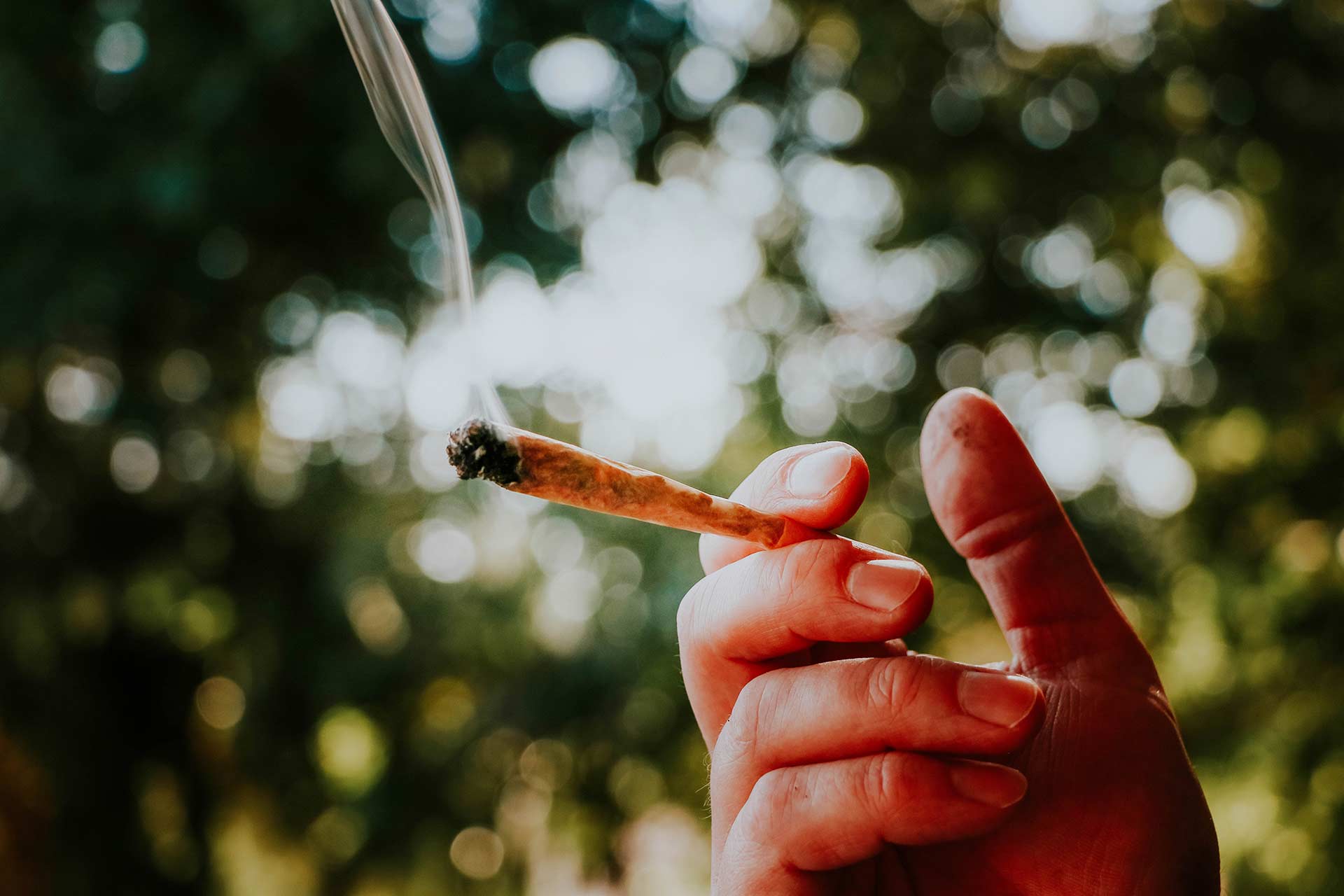
But there’s a wrinkle in all this. Have you ever heard the expression “this isn’t your grandparents’ weed”? As the legal cannabis market grows and extraction and processing technologies improve, many cannabis products have become far more potent than they were even a few years ago. As a result, consumers who haven’t indulged since pre-legalization may find the cannabis they encounter is far stronger than expected!
So: How much THC is too much? The slightly unhelpful—but truly honest answer is—it depends! Some variables include your prior experience with cannabis, your age, your gender, how much food you consumed prior to taking an edible, and other factors. While a given person might feel plenty medicated after ingesting 5 mg, others might not feel much psychoactivity at all.
That’s why it’s imperative—especially for newer consumers—to approach dosages of slower-acting products such as edibles and tinctures with caution. “Start low and go slow” is the watchword here, and we recommend you wait and only gradually increase dosage from there.
Even with rapid-onset formats such as smoking or vaping, we recommend you wait at least 15 minutes before ingesting more cannabis. A given strain might be much more potent that the products you’re used to, and while you can always take more cannabis, you can’t take less.
All the cannabis-infused edibles we sell are clearly labeled with the amount of THC each serving contains, and we strongly recommend you always follow the edible dosage guidelines on the package. Also, keep in mind that this list is strictly for THC, and edibles with a combination of THC and CBD can affect you slightly differently. Why? That’s because clinical research (and anecdotal evidence) indicate that CBD tends to mitigate the psychoactivity associated with an excess of THC. It’s as if the cannabis plant has its own built-in “emergency brake” to make sure the experience isn’t too overpowering!
For the best possible experience, it’s always a good idea to have a real-life conversation with your friendly neighborhood budtender about your familiarity with cannabis, past experiences, and general metabolic characteristics.
How Much THC Is Too Much? Can You Overdose on Marijuana?
Let’s get this out of the way first: If you mean “fatal overdose,” you can’t (although a mysterious case from 2019 did raise questions). But you can definitely have too much and wish you hadn’t. The good news is that, typically, the experience is typically fairly brief.
In many of the cases reported by hospital ERs, patients inexperienced with cannabis have imbibed too quickly and are suffering from delusions: Paranoid behavior, visual or auditory hallucinations, and other such symptoms. It’s important to note that such cases typically occur in people who already suffer psychiatric disorders or are prone to them.
In short, overdosing on cannabis happens most often to people who don’t use THC products often and accidentally exceed their limits. It’s also more common when people mix cannabis with alcohol or other substances that can increase the effects.
How Many MG to Get High: THC Milligram Dosage Chart
So, how much THC is too much? Here are ranges to help you set general expectations. Again, it’s helpful to remember that everyone’s physiology is a bit different.
1 – 5 mg THC
This is generally regarded as the smallest of THC dosages, making it perfect for beginners as well as those of us who’d like to microdose. At this level we’ll typically feel mild relief of pain, stress, anxiety, and other symptoms. Some consumers experience heightened creativity as well.
5 – 15 mg THC
At this level of dosage, you’ll tend to feel stronger symptom relief. This is also where most consumers tend to feel a heightened sense of euphoria. You might also experience slight impairment of coordination and alteration of your perception of time. Anything under 15 mg is a good choice for helping with insomnia (especially with indica-dominant strains), while more energizing sativa-dominant strains can foster increased social interaction in some users.
15 – 30 mg THC
We recommend caution with inexperienced consumers ingesting dosages above 15 mg. This level is where newbies tend to experience paranoia, while seasoned users enjoy the heightened euphoria and relaxation. It’s also a good choice for cannabis patients who have developed tolerances to lower doses.
30 – 50 mg THC
At this dosage, most people experience impaired coordination and altered perception. That said, medical patients who have difficulty absorbing cannabinoids into their GI tract are helped by edible dosages of this level.
50 – 100 mg THC
This level is only for those experienced with THC. Even in seasoned consumers, negative side effects like paranoia and rapid heart rate can occur. Coordination is almost always impaired at this stage.
Beyond 100 mg THC
This level of dosage is only recommended for the most experienced consumers. Often called a “heroic dose,” it’s only for those who have taken high doses in this range before.
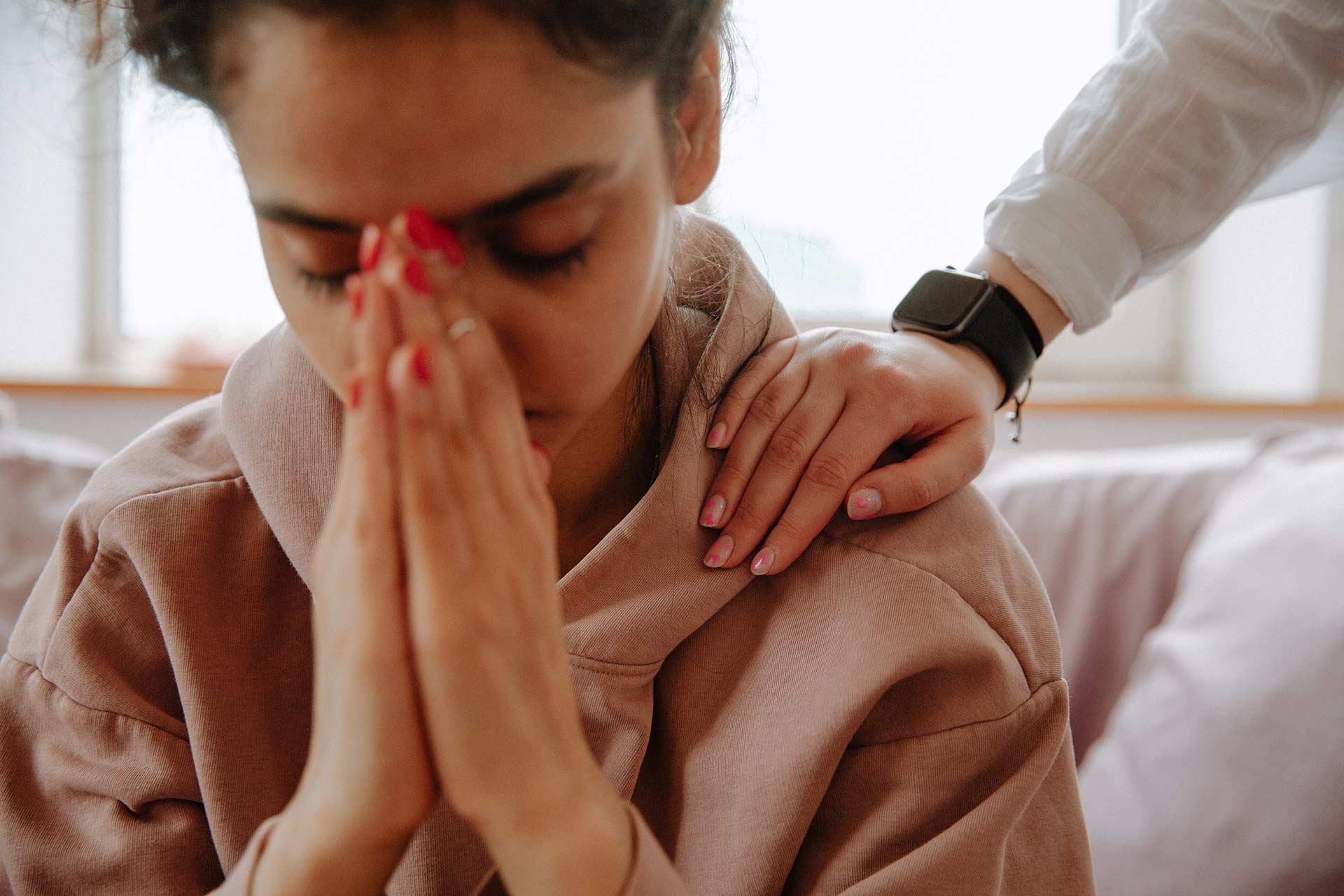
THC Dose: Signs You May Have Overindulged
It’s all very well for us to tell you overdosing on marijuana isn’t dangerous. When you’re in the middle of a bad experience, it can still feel overwhelming. Here are some telltale signs you might have ingested too much THC:
- You feel generalized, free-floating anxiety or paranoia
- You’re confused and unable to distinguish what’s happening from your imagination
- Your heart is racing
- You feel nauseated
- You feel dehydrated
How to Dose THC: What if I’ve Taken Too Much?
Suppose you’re experiencing any of the above symptoms, to begin take a few deep breaths! Next, consider these tips to stop feeling so high:
- Stay calm. It might feel like forever, but these effects will only last a few minutes. We promise you’ll feel better soon!
- “Mom” yourself. What are the foods you find most comforting? How about a nice glass of water, or a piece of fruit? Feeding your body something nourishing and straightforward is a great way to get centered.
- Lie down and rest. You’ll feel better if you let your body relax and your mind roam. Find a dark, quiet place where you can be still and dream for a while.
- Get outside. If you’re feeling too anxious to stay still, indulging in a bit of nature time in a familiar place, like a garden or back yard, can help calm and focus your mind.
The most important thing you can do if you think you’ve consumed too much cannabis is try to stay cool, calm, and collected. Remember, this too shall pass!
How Much THC Is a Lot? Final Thoughts
Especially if you’re new to the world of cannabis, knowing how much THC is too much is vital information. We can’t say it enough times: “Start low, go slow.” Trust us, it’ll come in handy.
If you’re interested in learning more about how THC works in your body, we’d love to help! As Washington’s #1 family-run medical marijuana dispensary, we’re dedicated to helping you get the very most from your cannabis experience. Have any other questions about THC dosage? Just ask! We’re always here to help.
The Washington DC Dispensary Guide to Cannabis Microdosing
New (and seasoned) cannabis consumers can benefit from an understanding of microdosing. Here’s everything you need to know.
If you’re a seasoned cannabis consumer, you’re likely familiar with the potency race to the top. As cannabis becomes legal in a growing number of states, producers battle to attract consumers with products that pack a more potent punch.
But stronger doesn’t always mean better!
There are days when you want to experience the therapeutic benefits of cannabis, but you still need to get things done. That’s where cannabis microdosing, our Patient Consultant’s secret weapon for sustainable daily cannabis consumption, comes in. So what is cannabis microdosing? And how can you incorporate the benefits of micro-dosed cannabis into your daily routine? Let’s take a closer look!
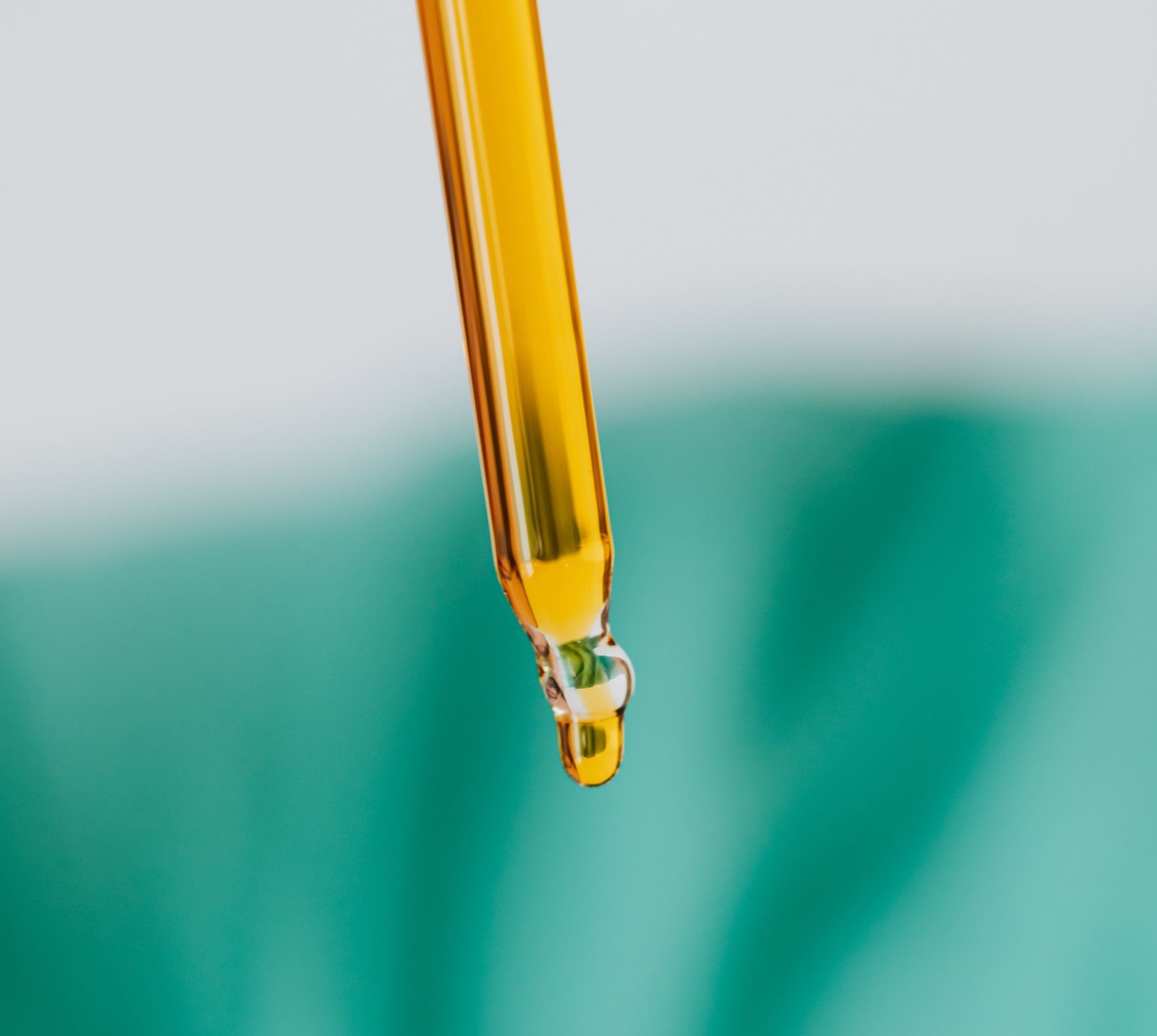
What is cannabis microdosing?
First things first; what is cannabis microdosing? While the actual amounts of cannabis an individual uses for microdosing can vary from person to person, micro-dosing consists of using a minimal dose of cannabis, either by taking a small amount of a pure THC product or a larger amount of a high CBD, low THC product for a more mellow effect enjoyable over a long period.
The techniques of micro-dosing cannabis were initially associated with hallucinogens like LSD or mushrooms and have recently been expanded to investigate the potential of low dosage THC.
The idea is to balance the desirable benefits of THC and the sometimes overwhelming psychoactive effects to create a sustainable daily high.
How is cannabis microdosing different from a full dose of cannabis?
When it comes to cannabis consumption, microdosing is all about calibration. Rather than maxing out THC levels for a complete mind/body experience, the small doses utilized by practitioners of cannabis microdosing are designed to deliver precise effects.
Where consuming a full dose of THC creates a specific bodily experience that some find overwhelming, the effects of microdosing are far more subtle and vary from person to person depending on several factors, including the cannabis strain, dosage level, and your body’s tolerances. Basically–the effects of microdosing are more subtle and controlled, allowing you to experience the therapeutic benefits of THC while continuing to go about your day unimpeded by the psychoactive effects.
What are the benefits of cannabis microdosing?
So, why microdose? The short answer is, it all depends!
Individuals might try microdosing for a variety of reasons–depending on their physical and psychological needs. Some people enjoy the relief microdosing can provide for bodily conditions like relief from chronic pain or topical treatments for inflammation. In contrast, others turn to the treatment for conditions such as insomnia, anxiety, and depression.
While most academic studies on microdosing have been done on psychedelic substances, consumers often report symptomatic relief; in addition, if you’re new to the world of cannabis consumption, microdosing can be a great way to test your tolerances and find out the right level of THC for your individual needs.

How to start cannabis microdosing?
First things first—let’s get you talking to a professional!
As with any change in your wellness or supplement routine, you should always check with an expert who understands the ins and outs of consumption to see if cannabis microdosing is right for you. A qualified Patient Consultant will help you determine if cannabis microdosing is right for you and determine the best place to start.
Once you’ve got the professional go-ahead, check out some of our favorite low-dose products! If you’re brand new to the world of microdosing, a high dosage CBD product like Abatin Wellness CBD oil can be a great place to start. A low THC/high CBD tincture like Liberty’s MediHaze allows you to control your dosage drop by drop. Or try a little infused honey for a sweetly light dose. Whatever product you choose, Takoma Wellness’ experienced budtenders are here to help guide you through your cannabis microdosing journey.




